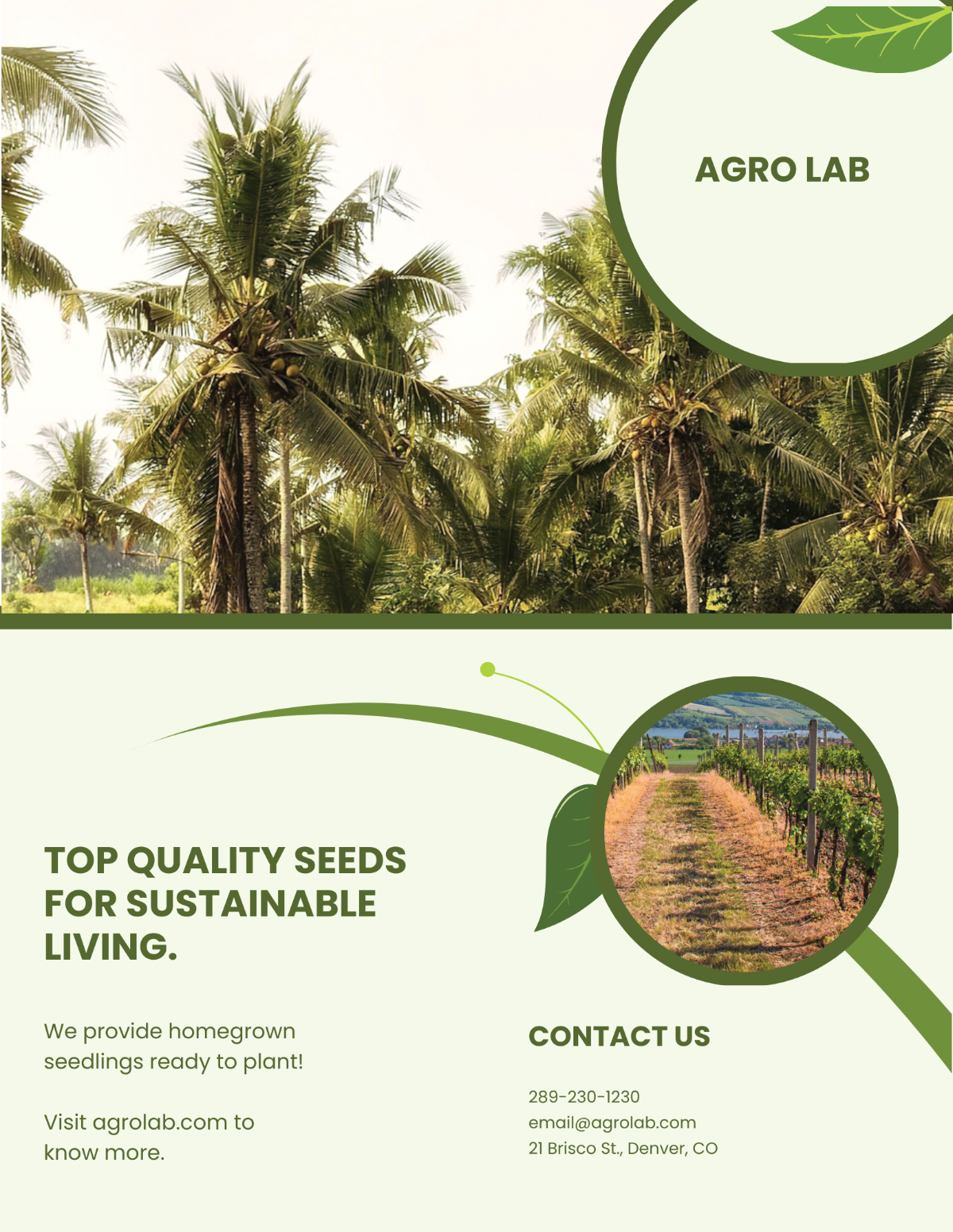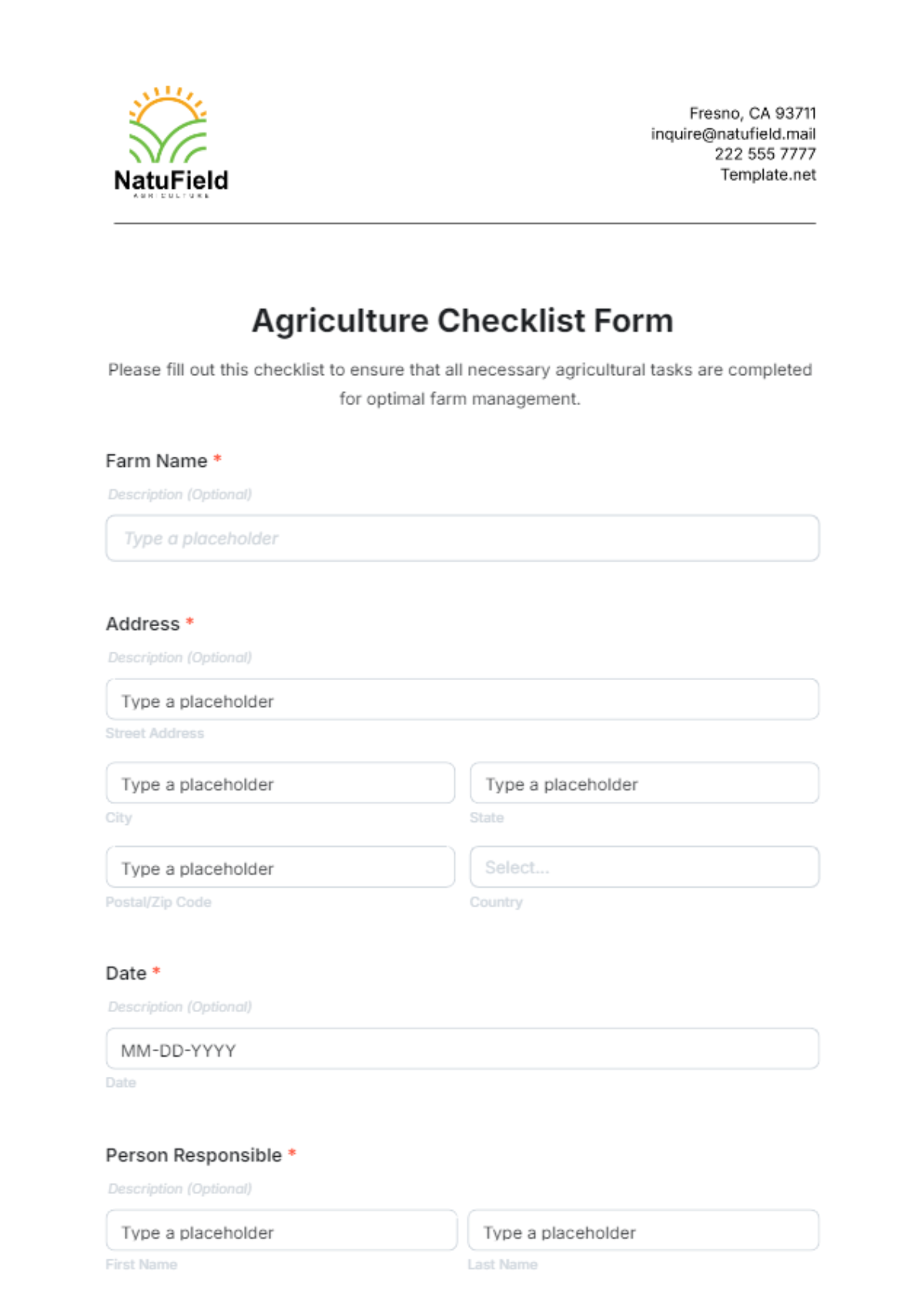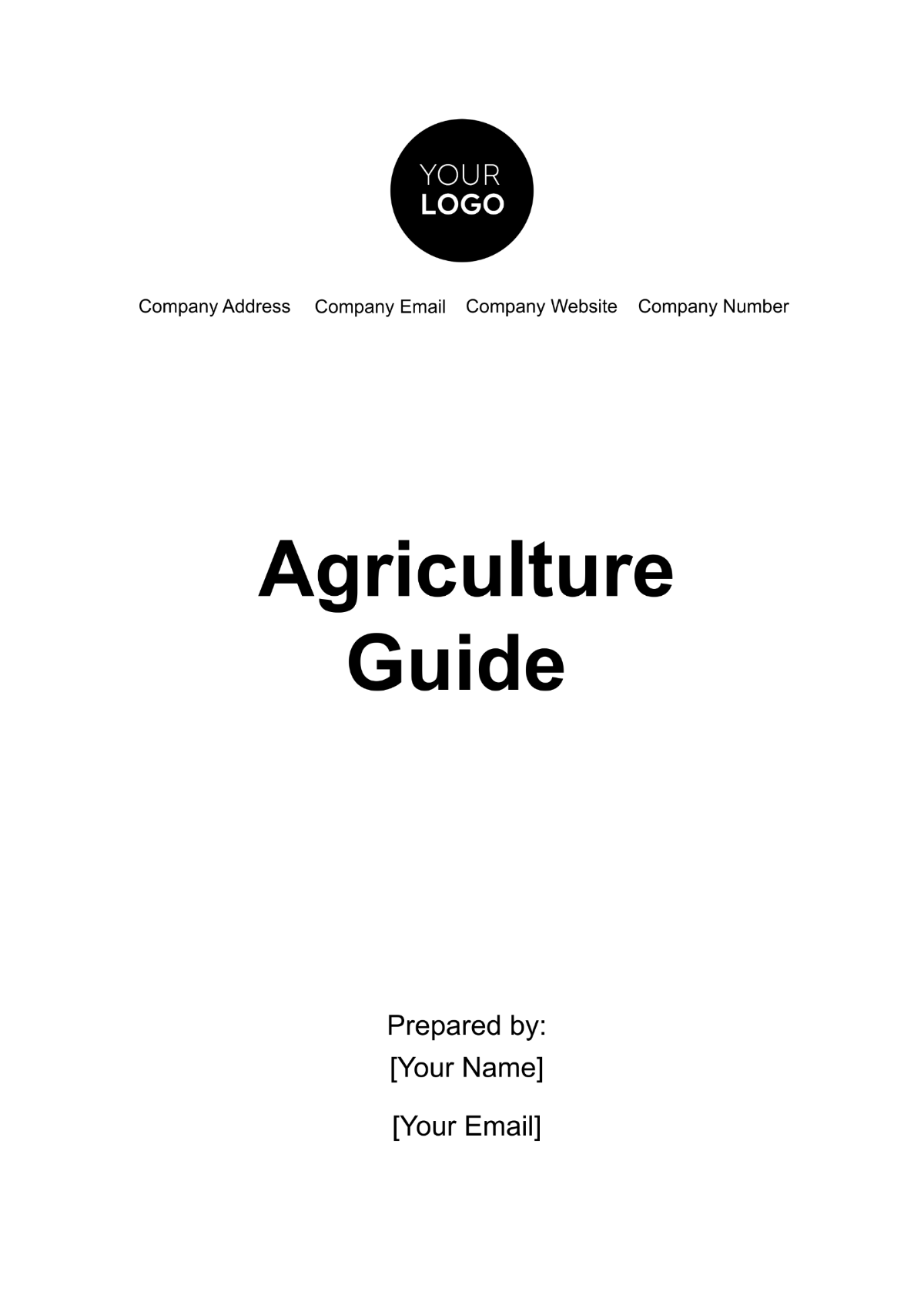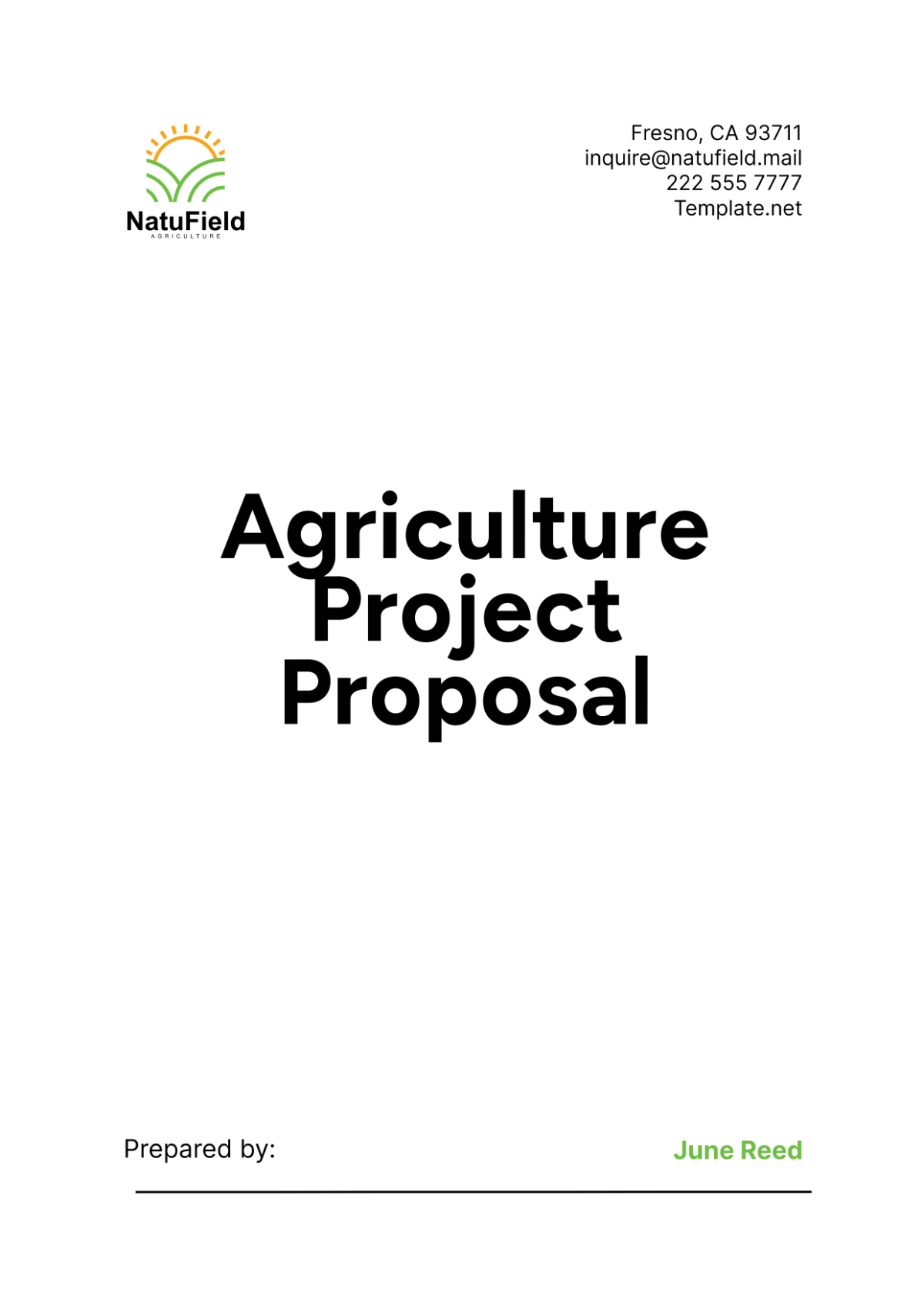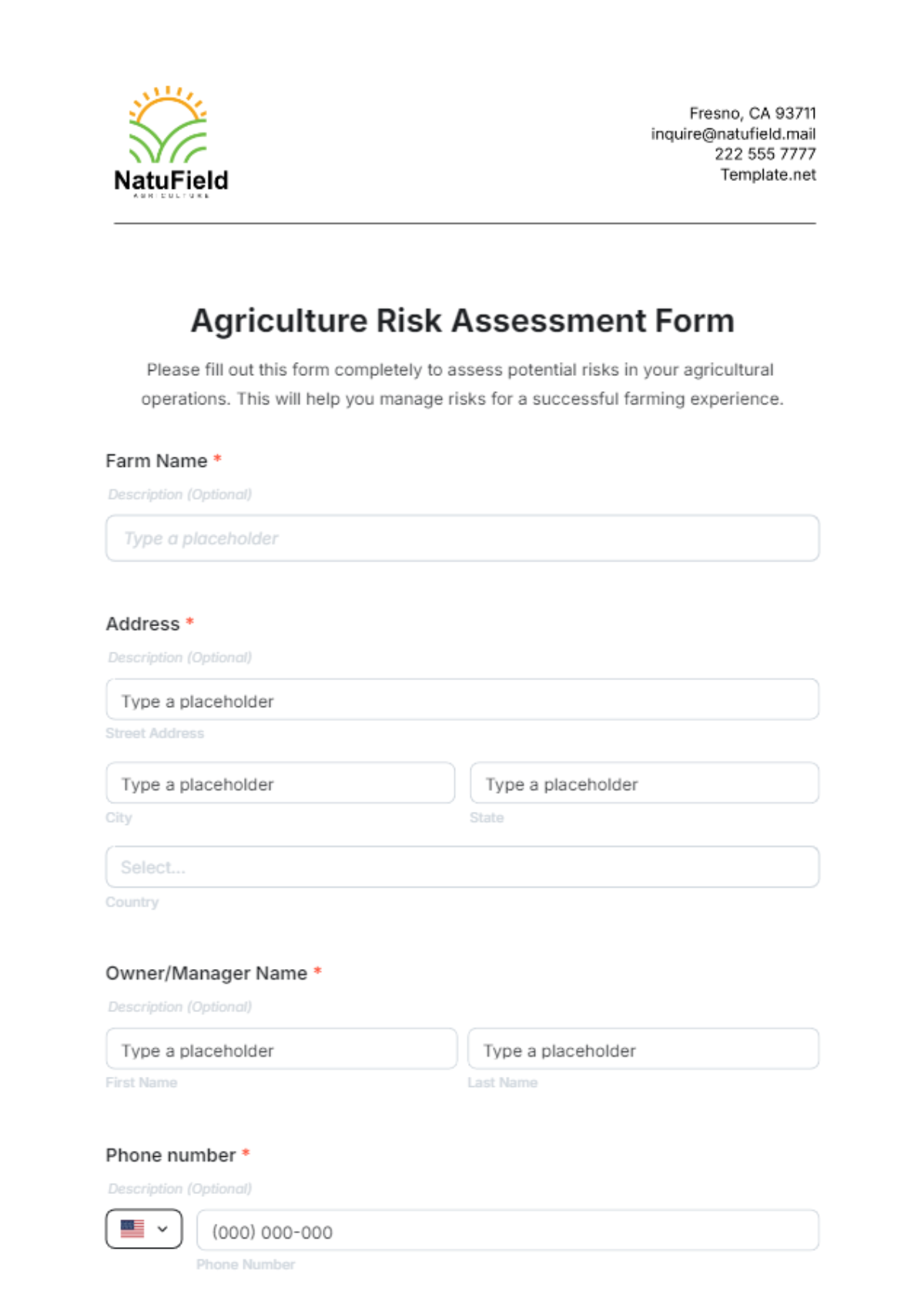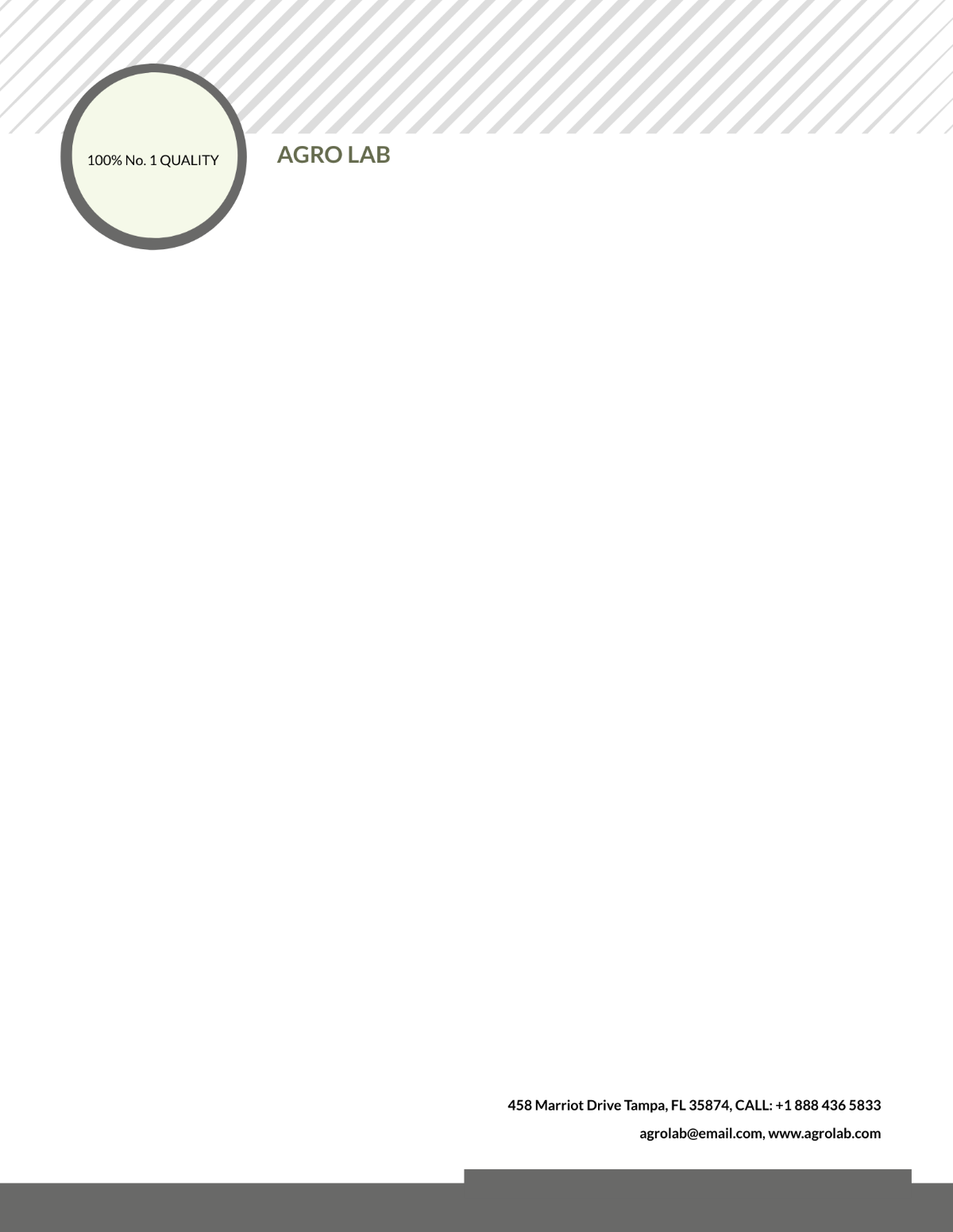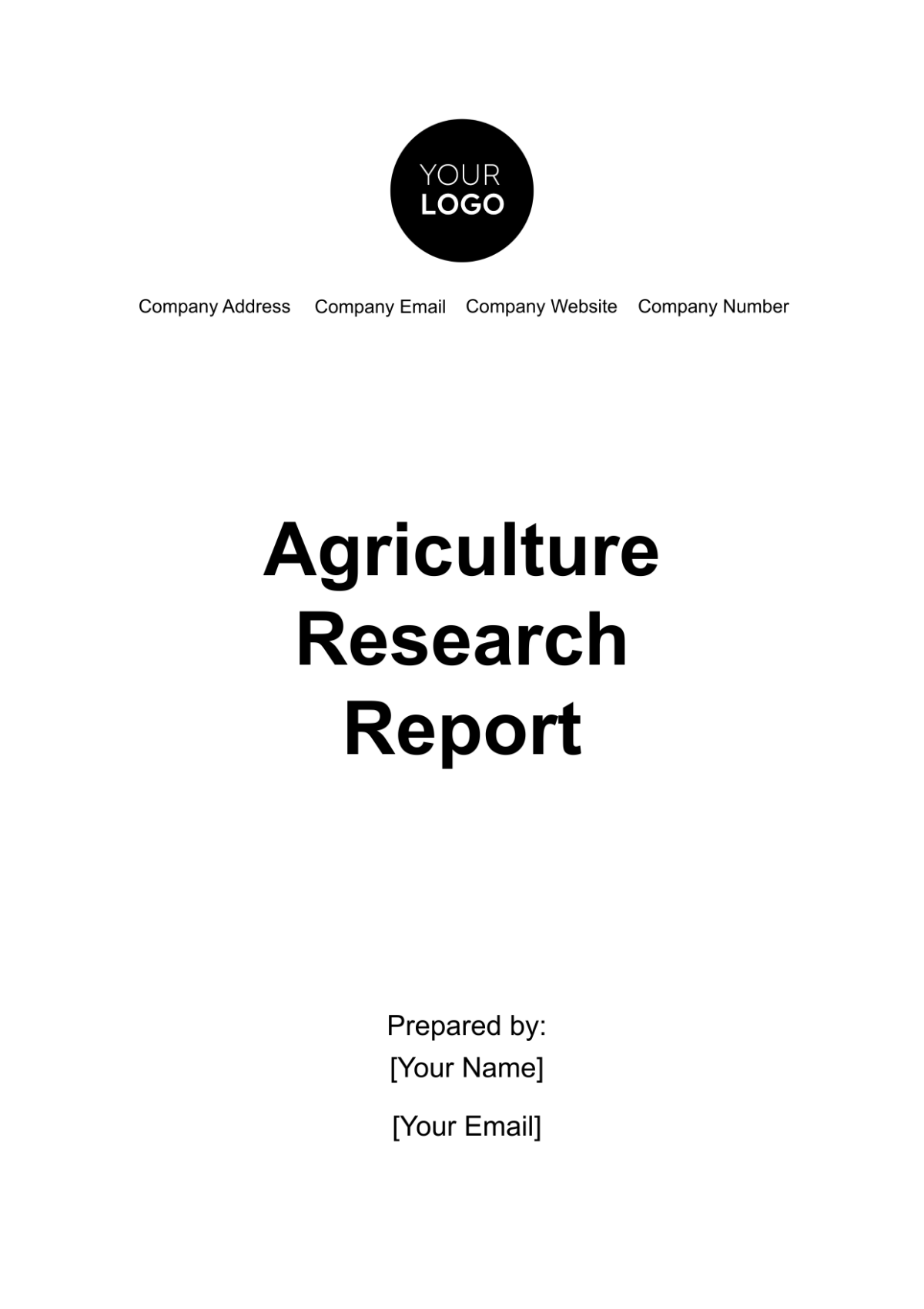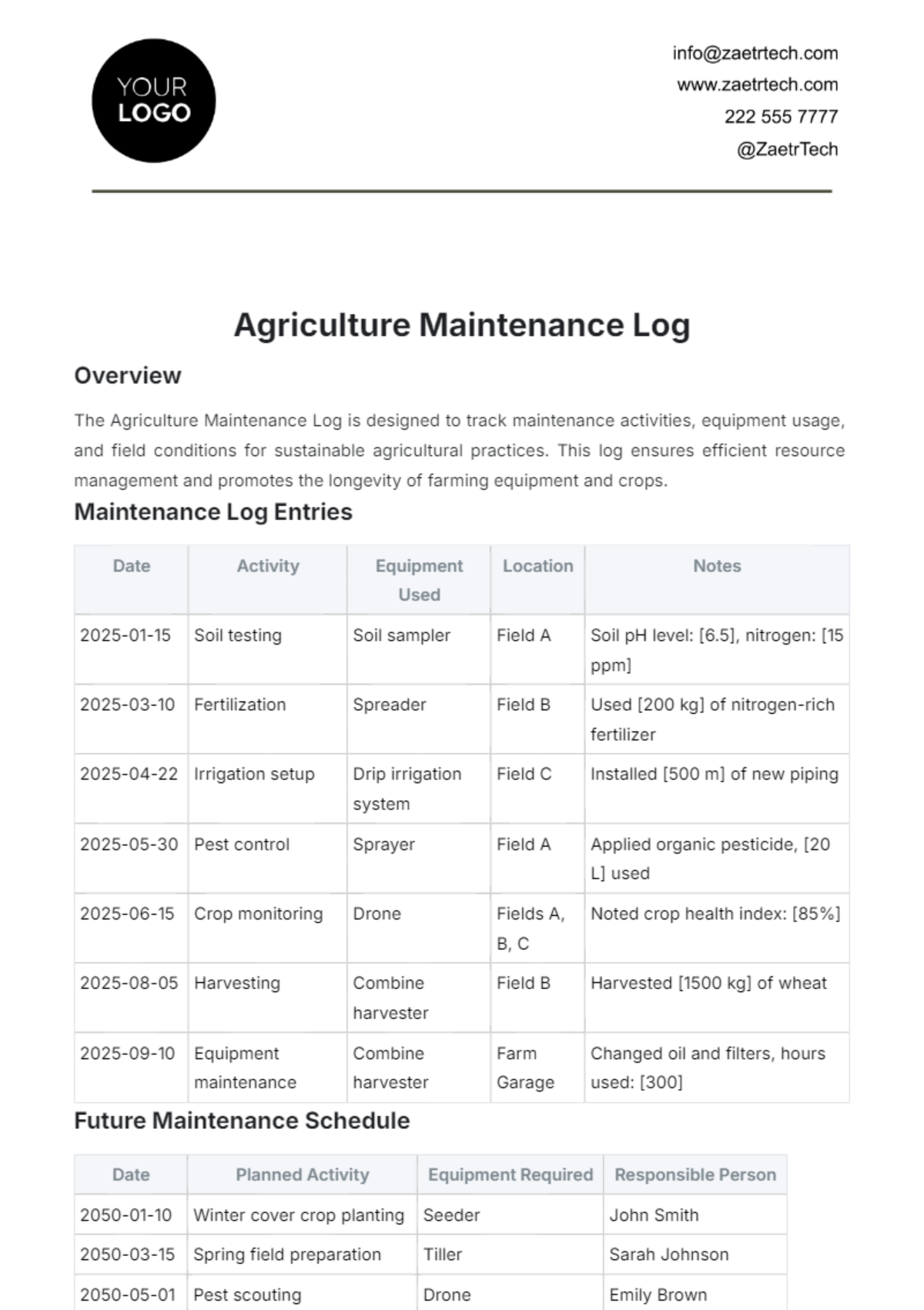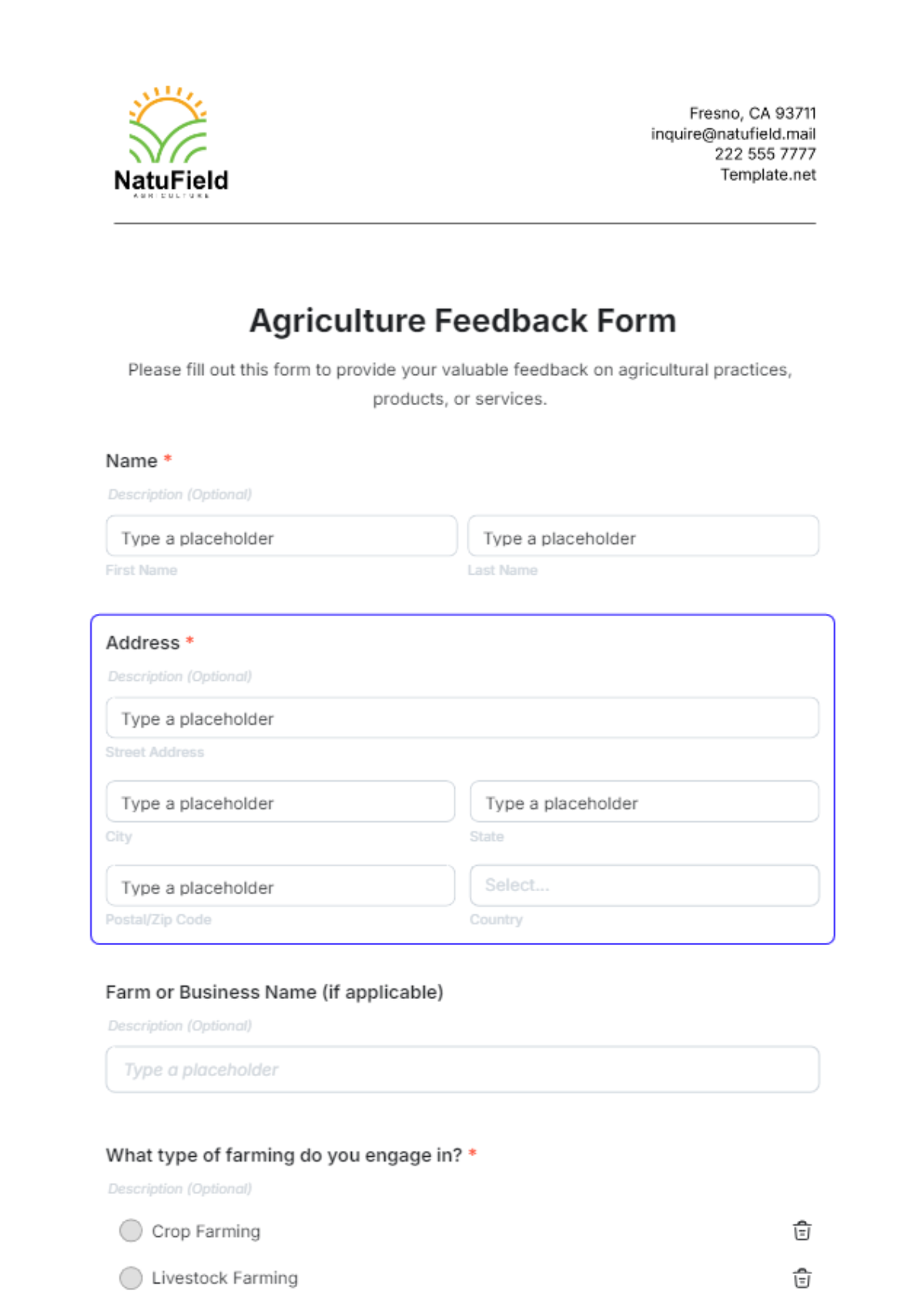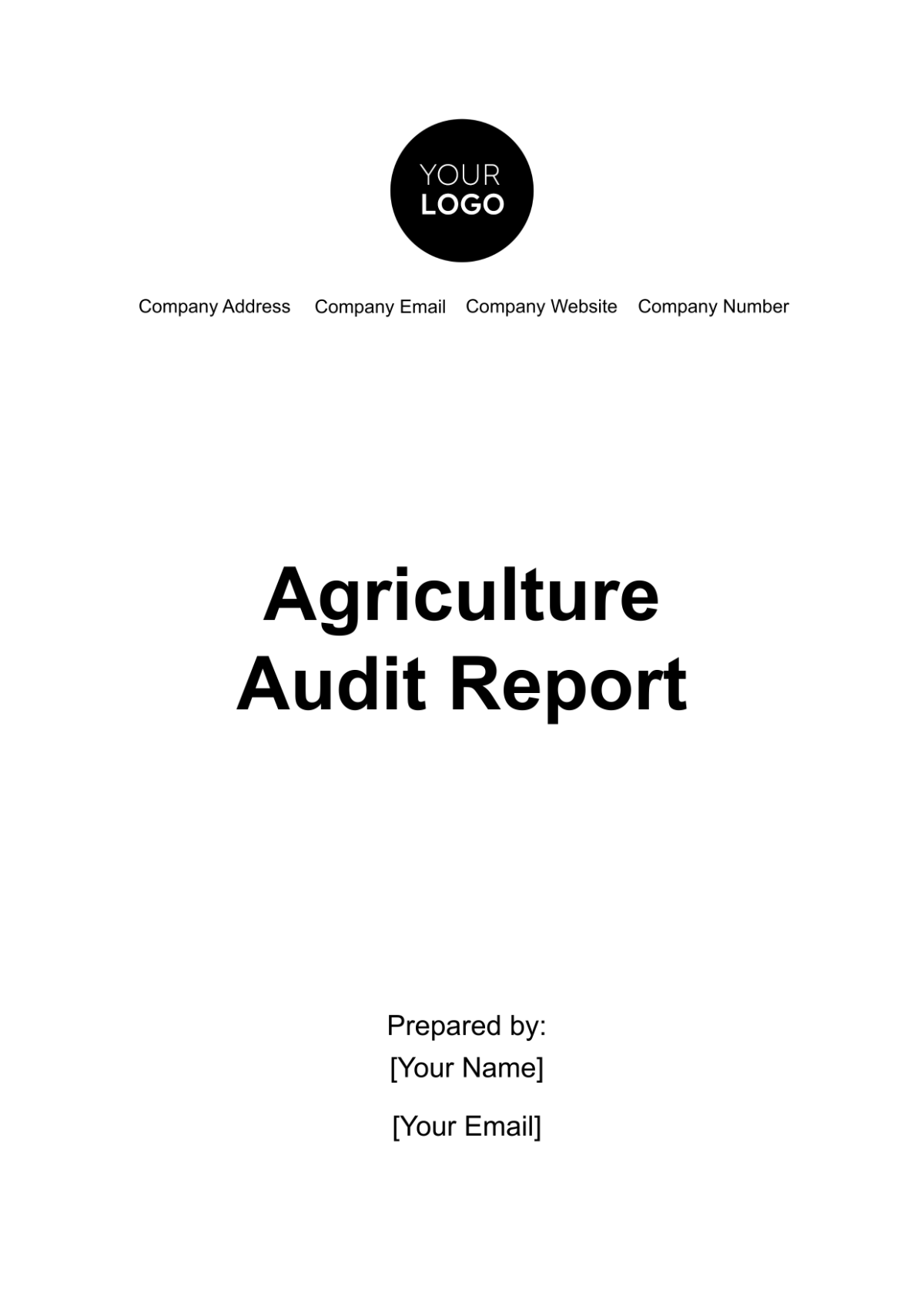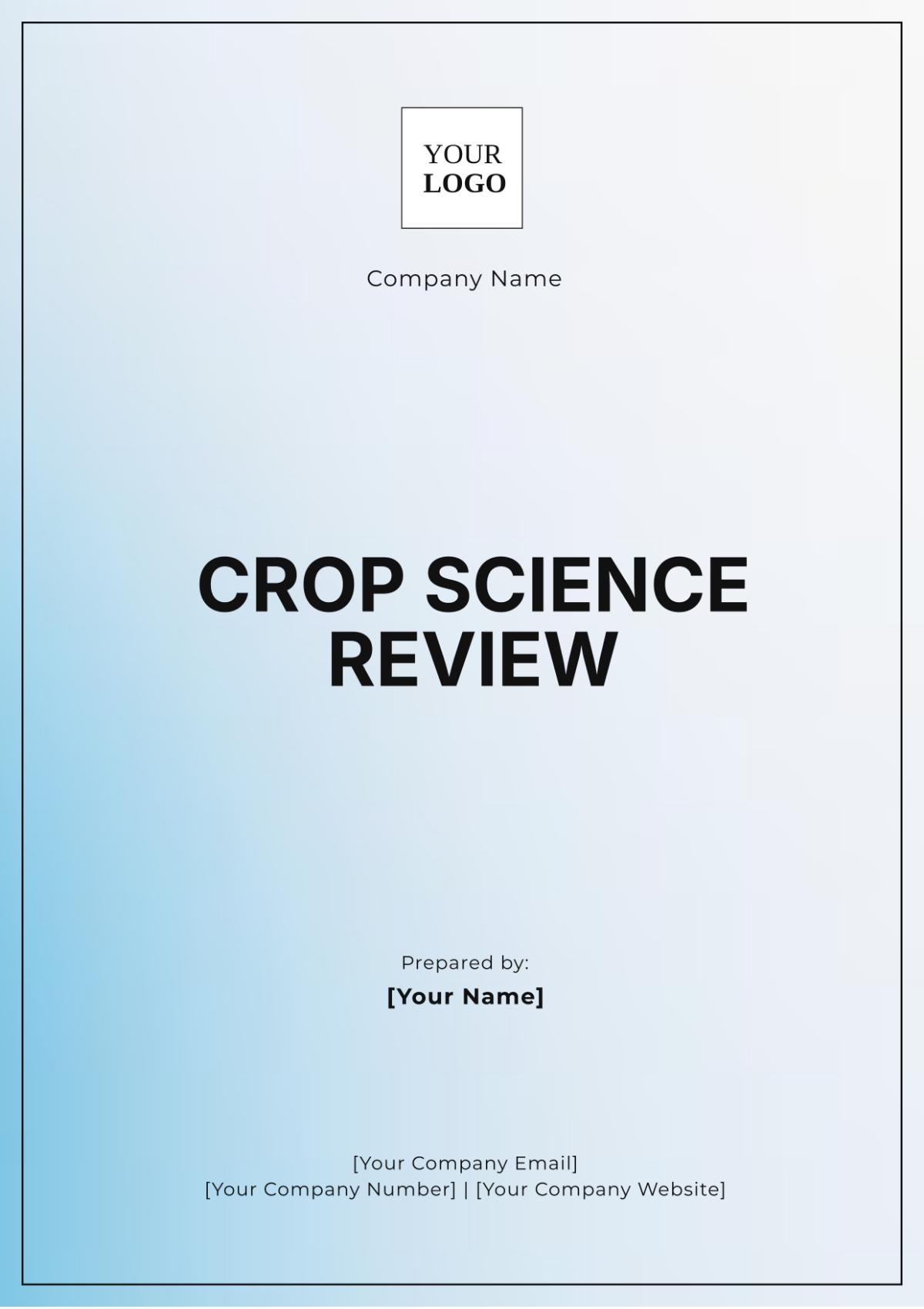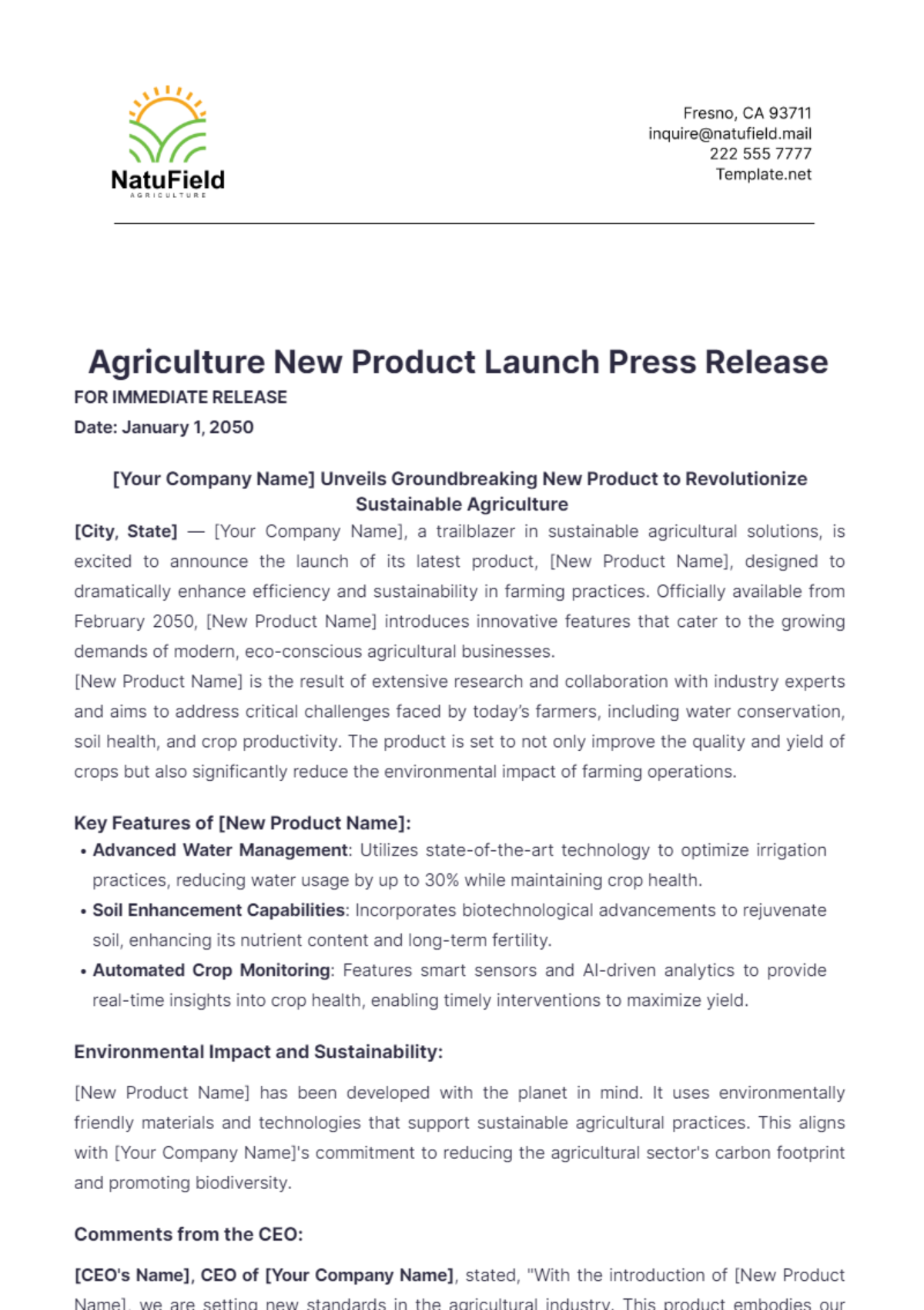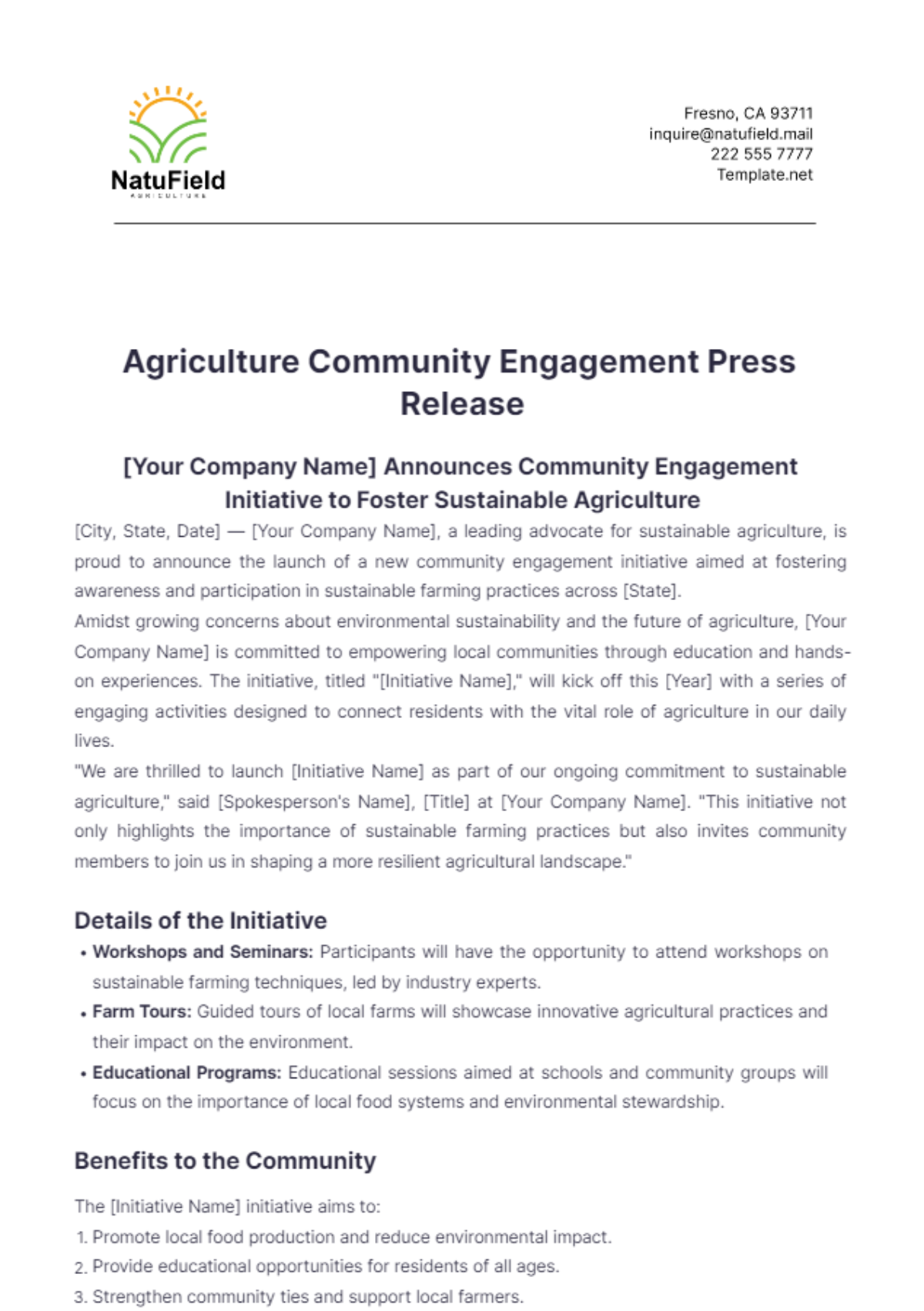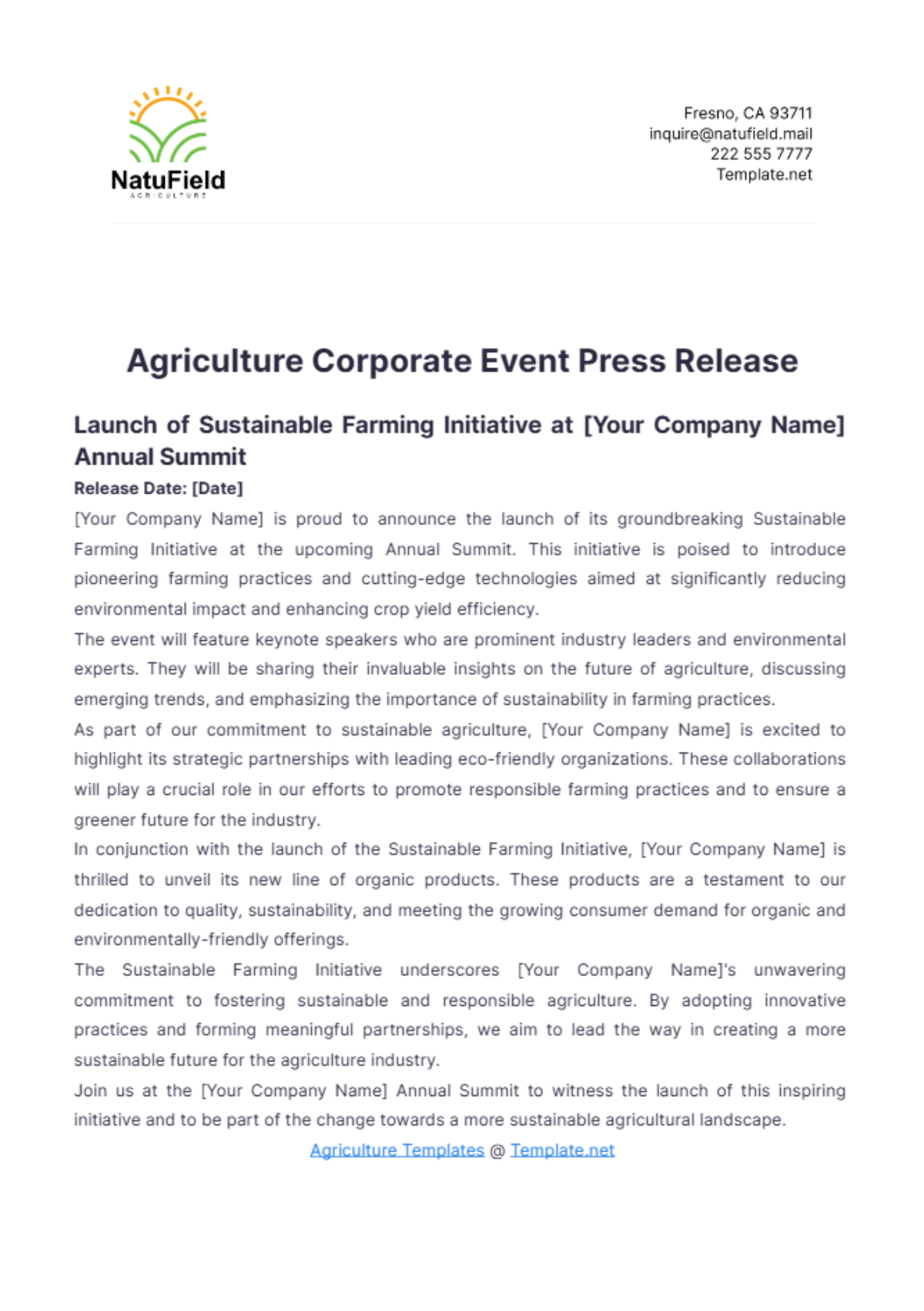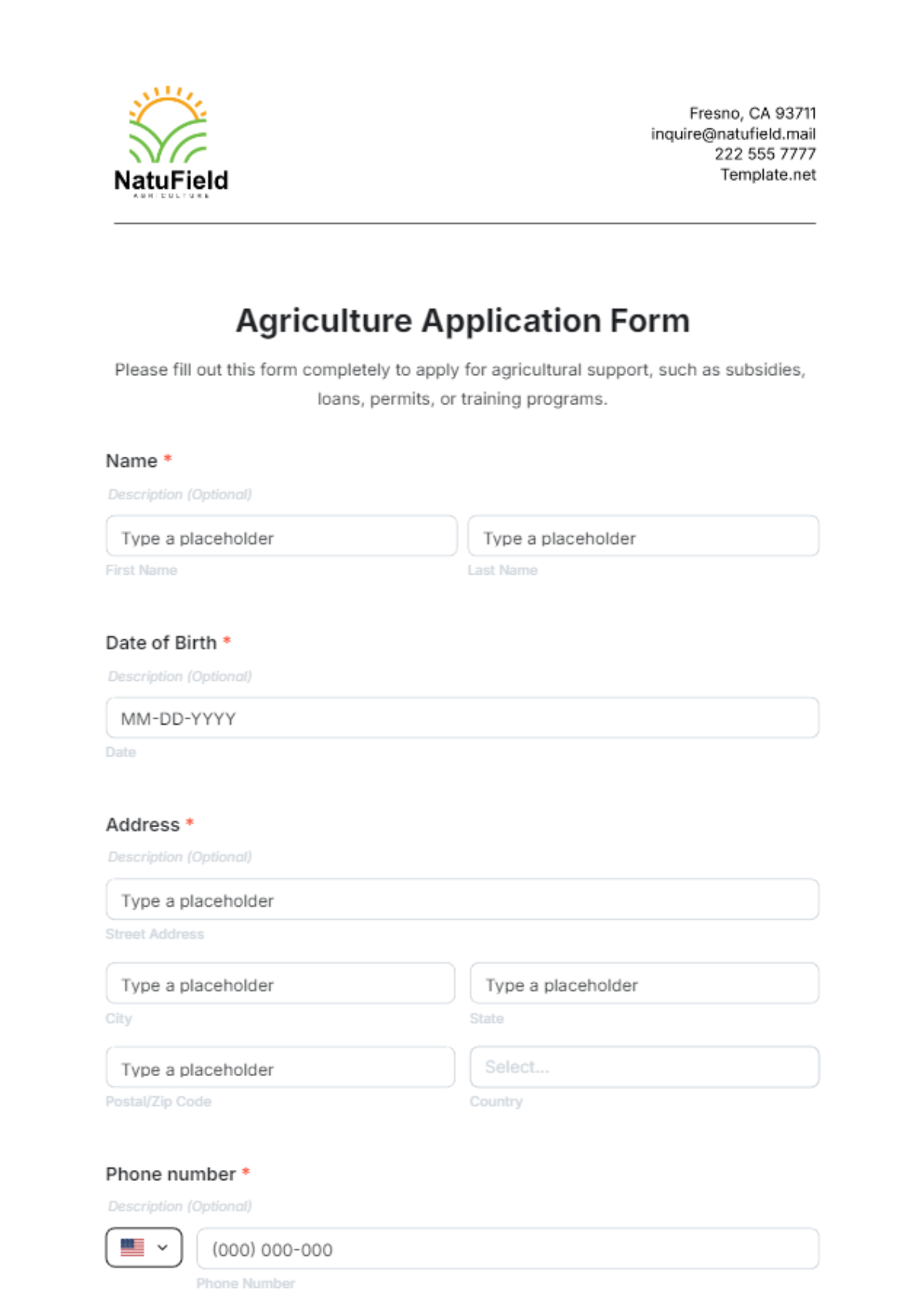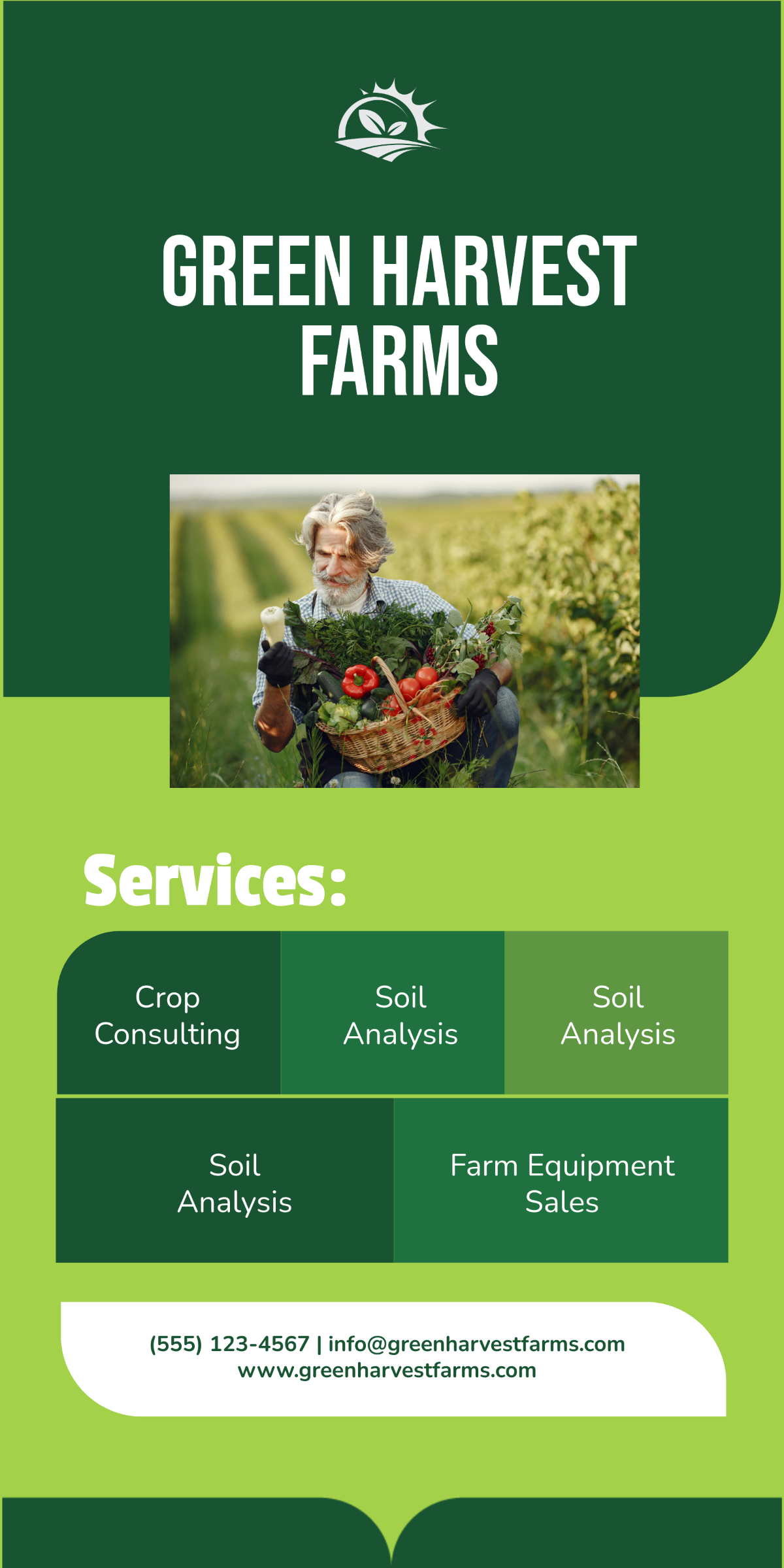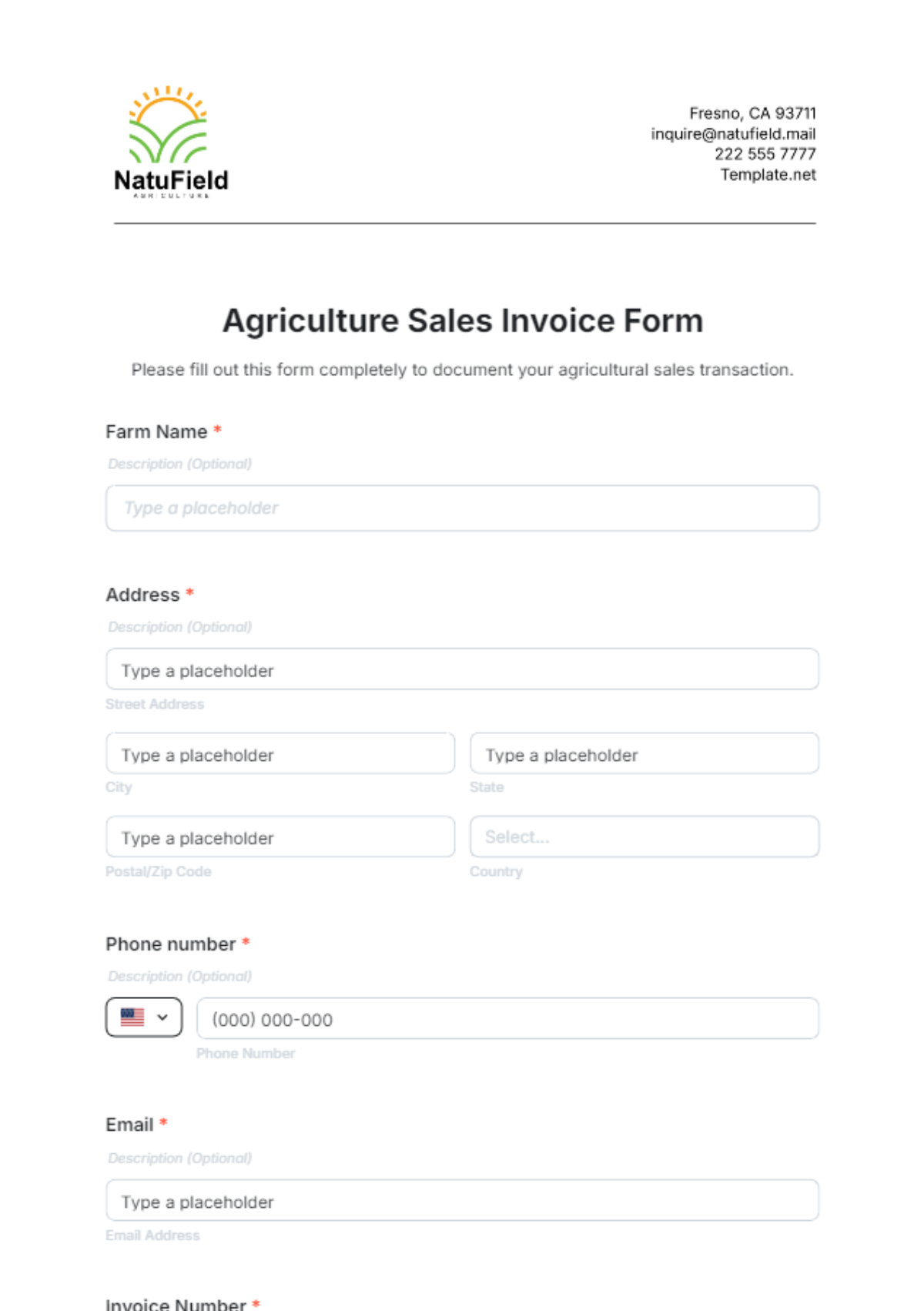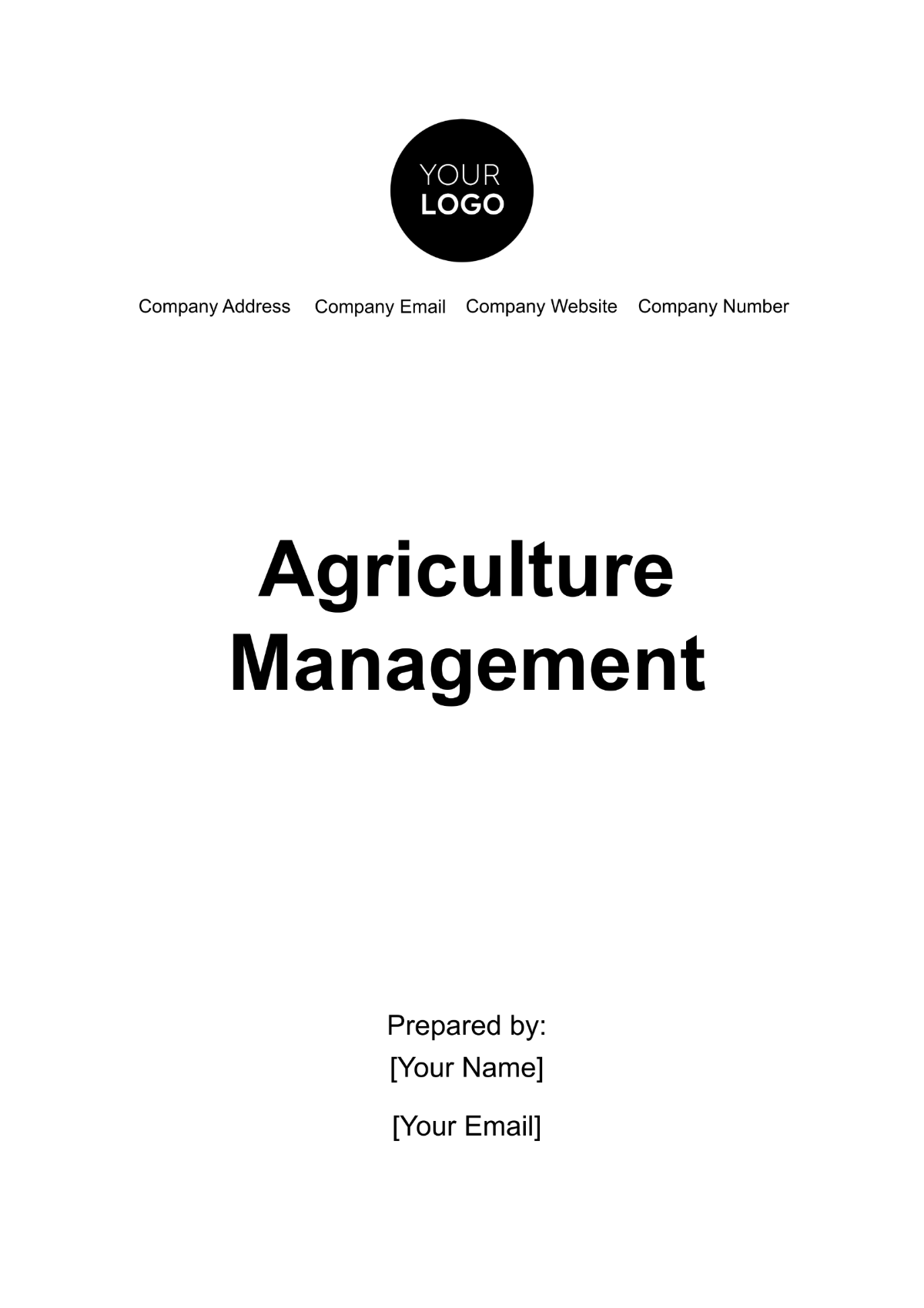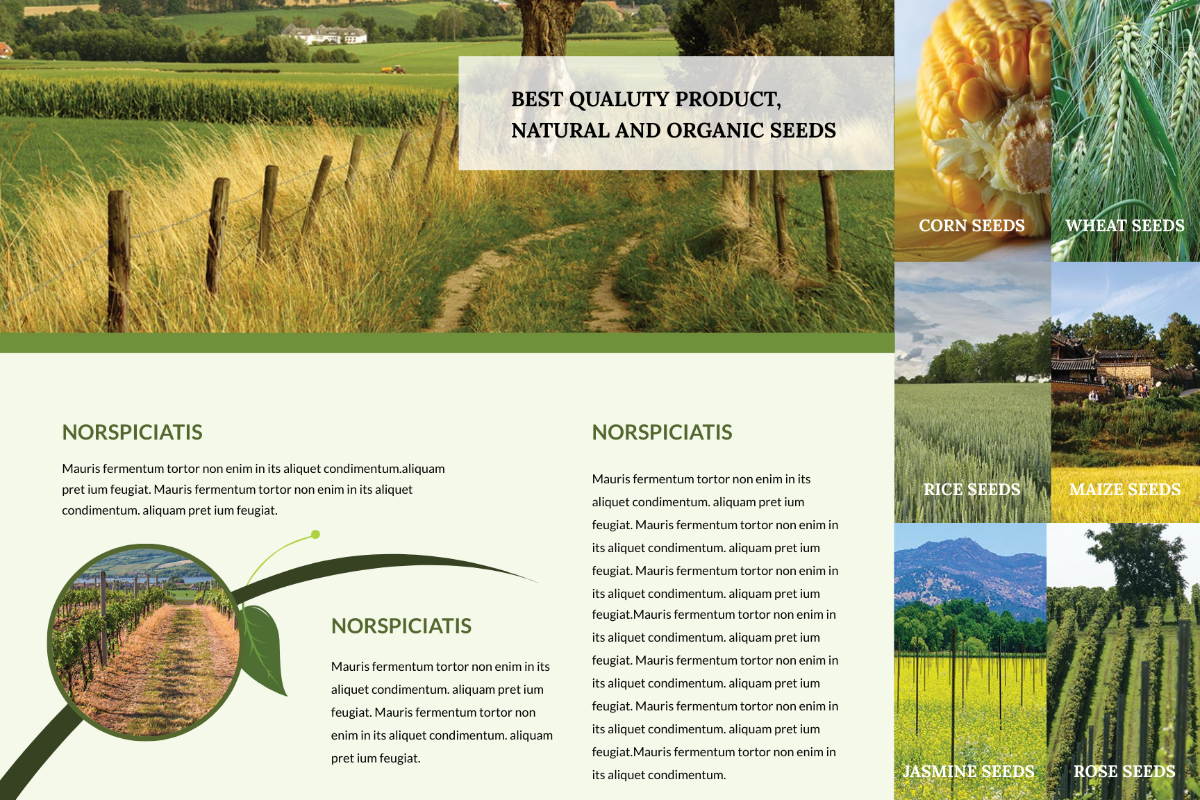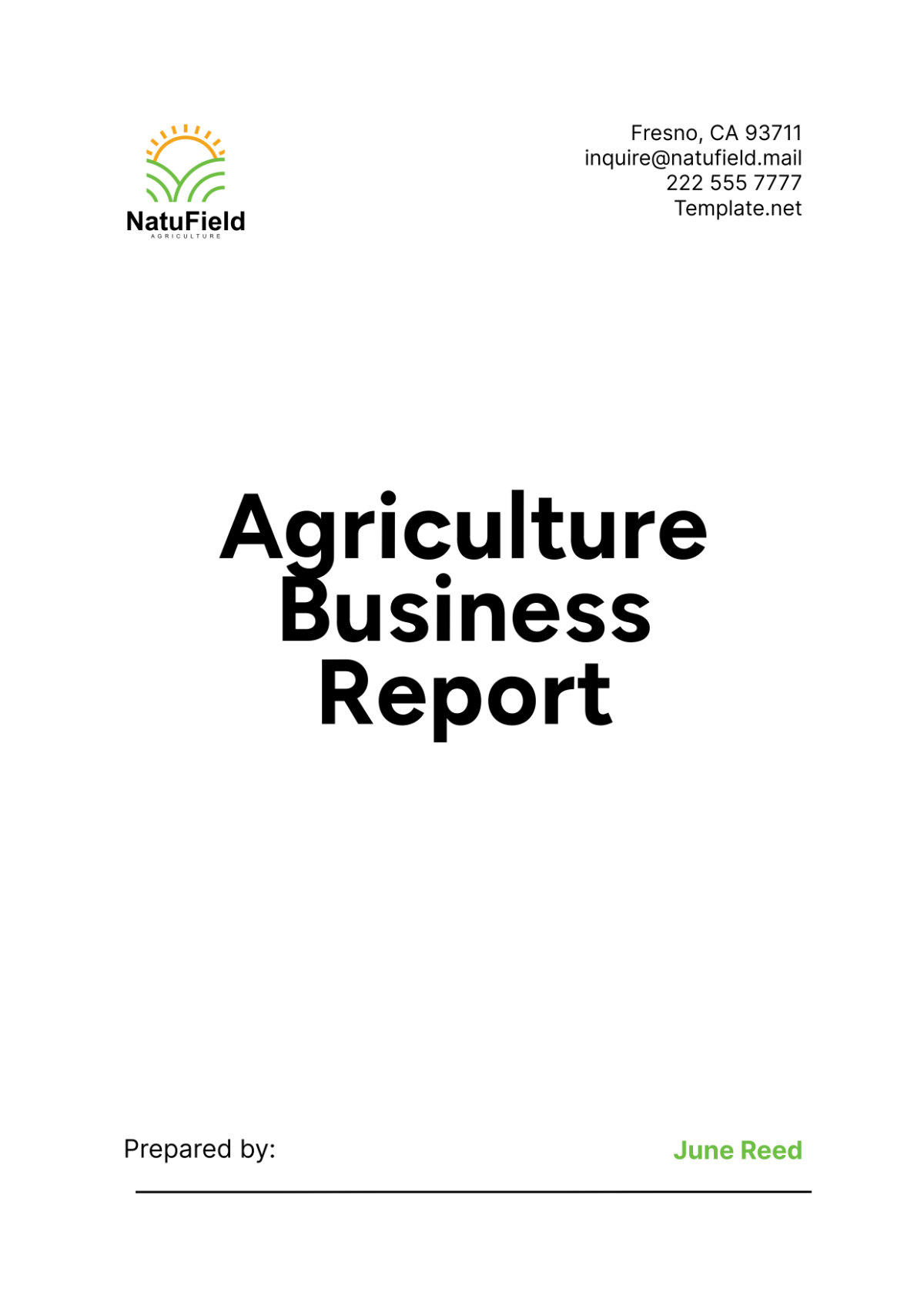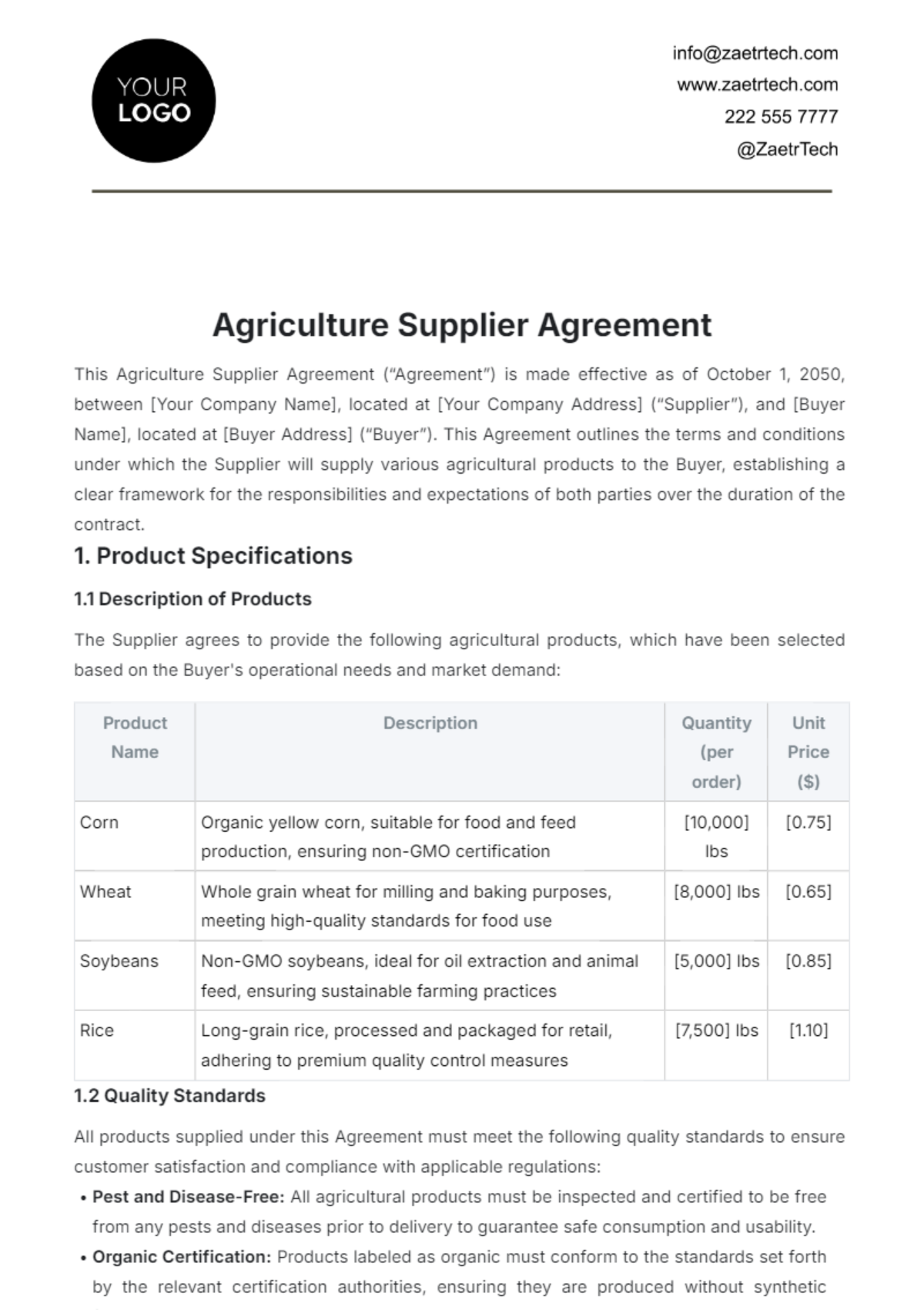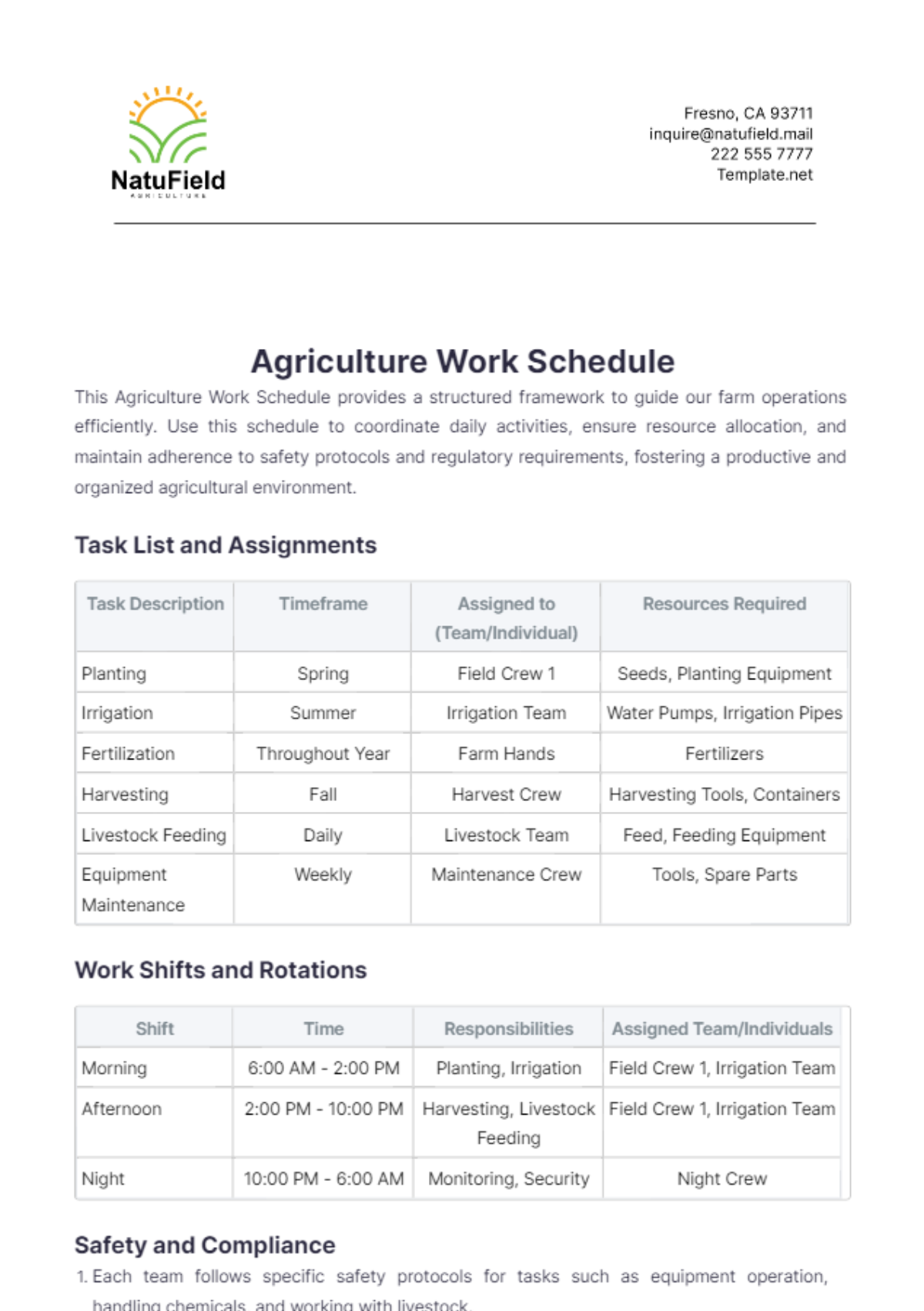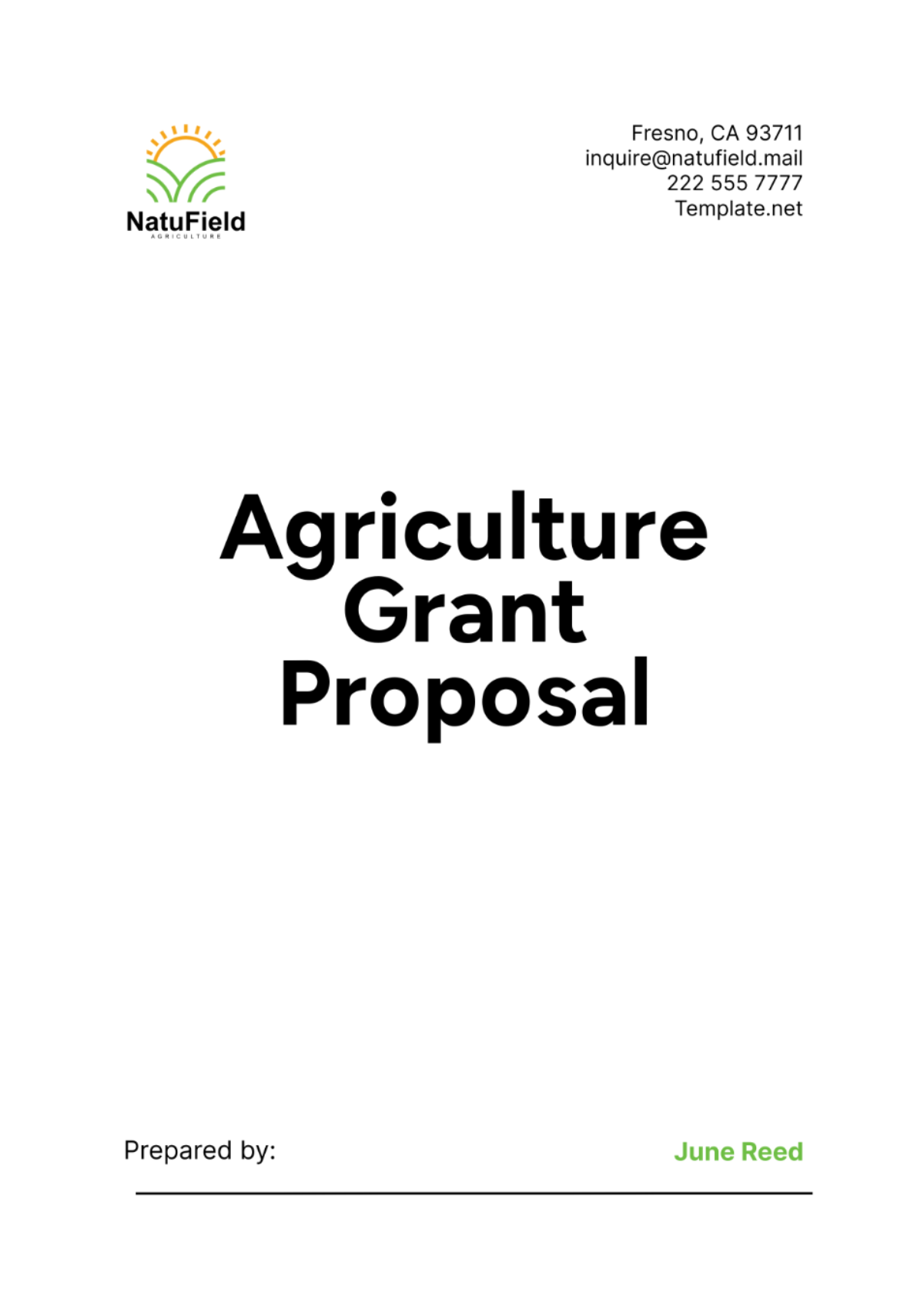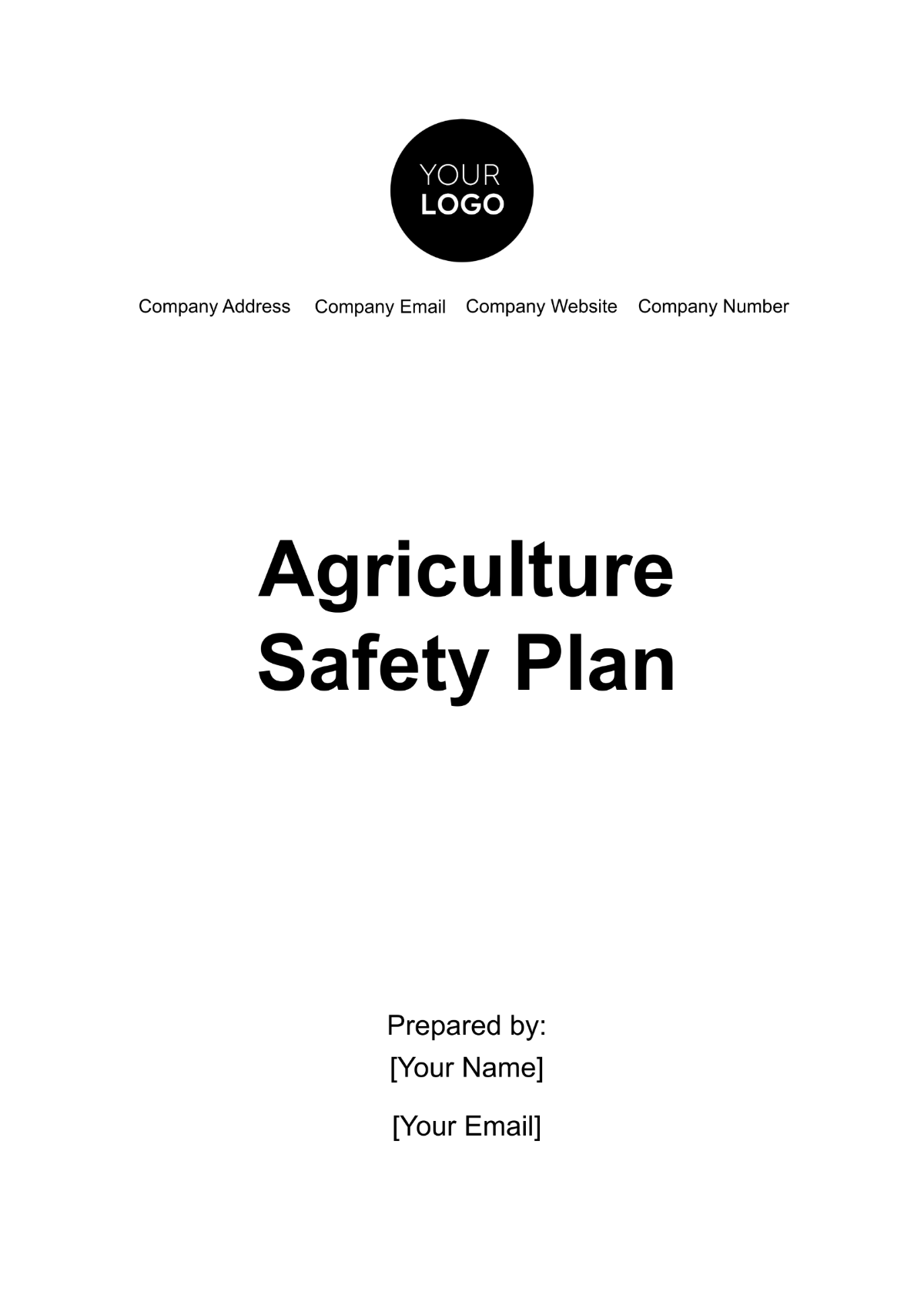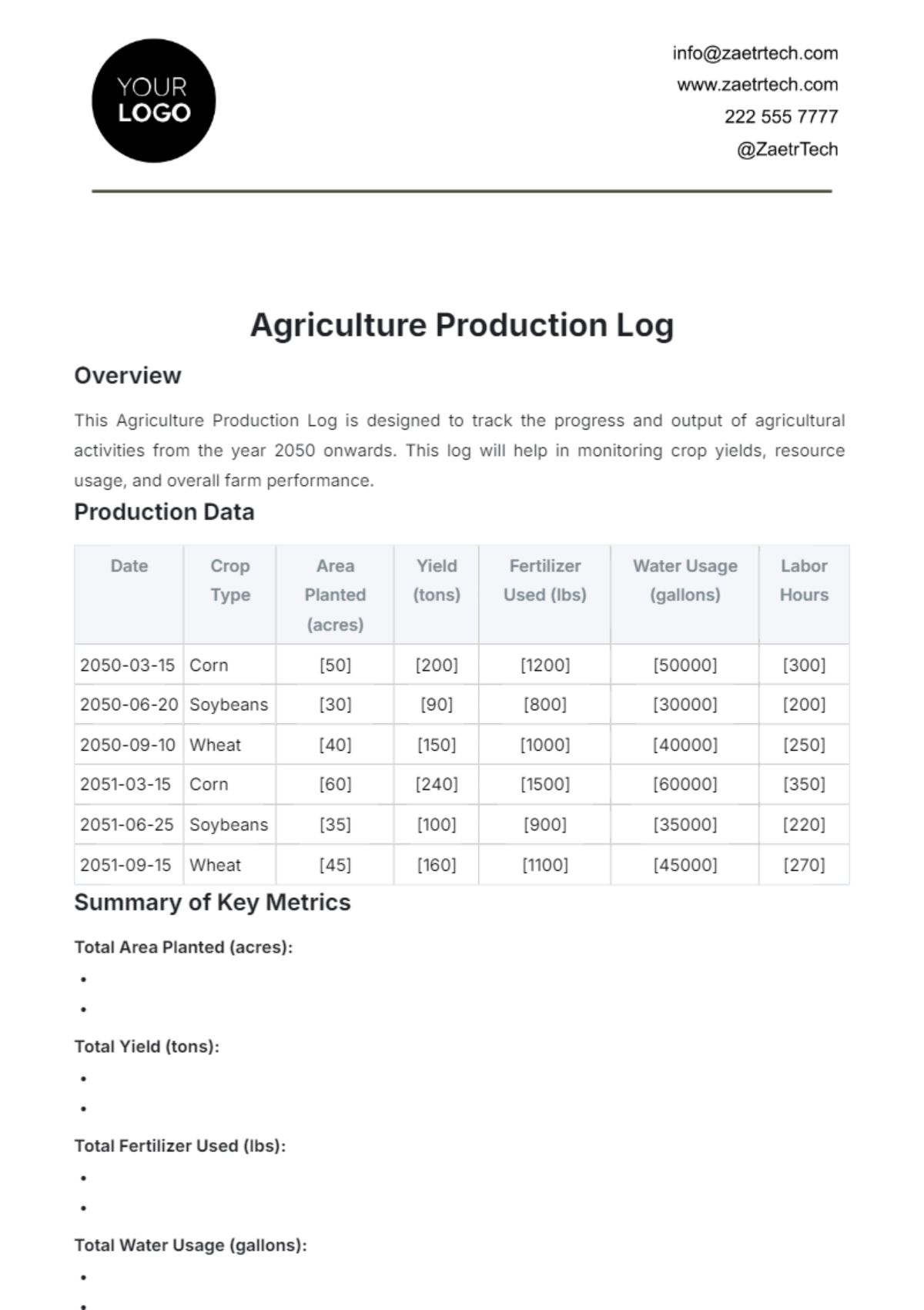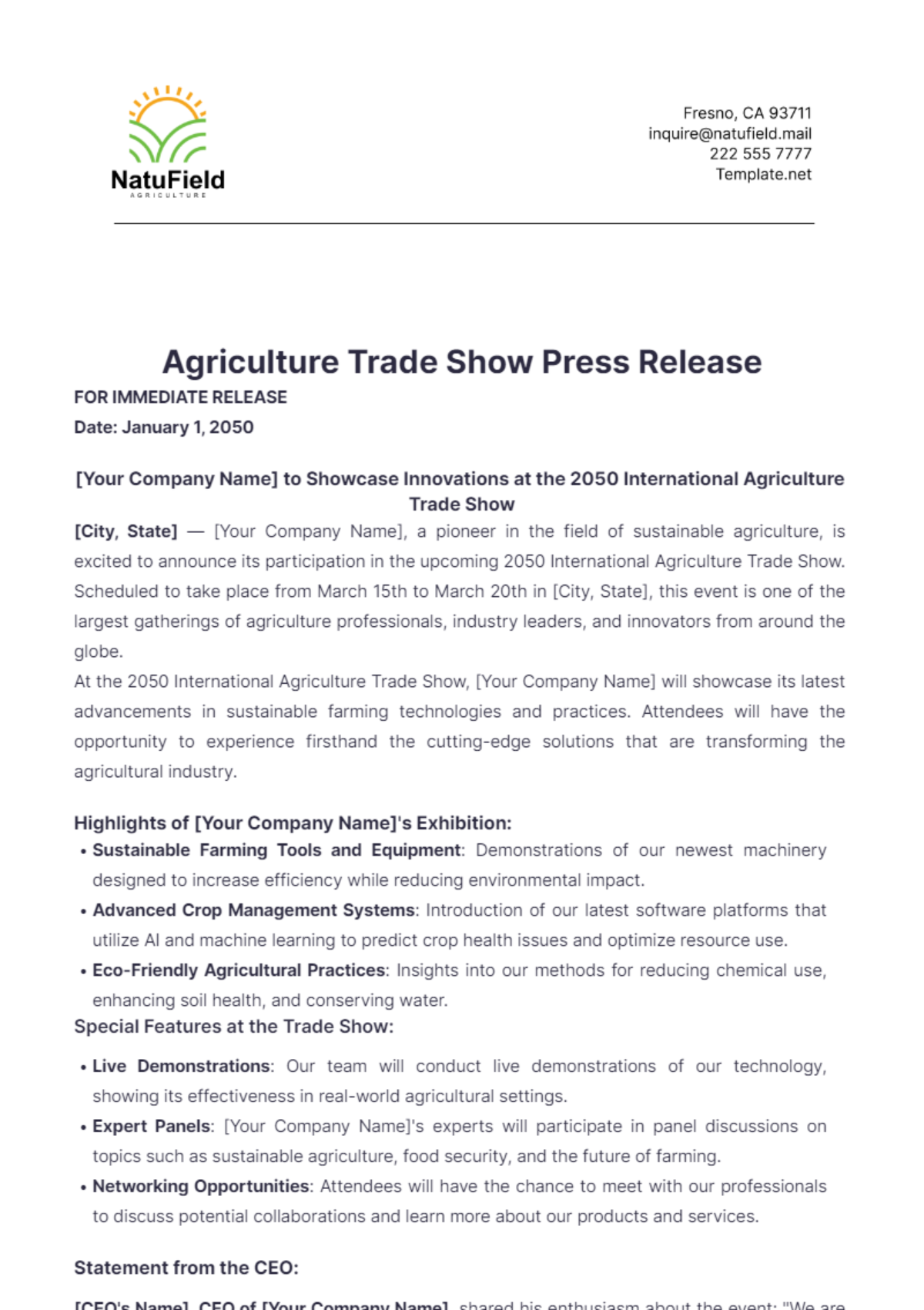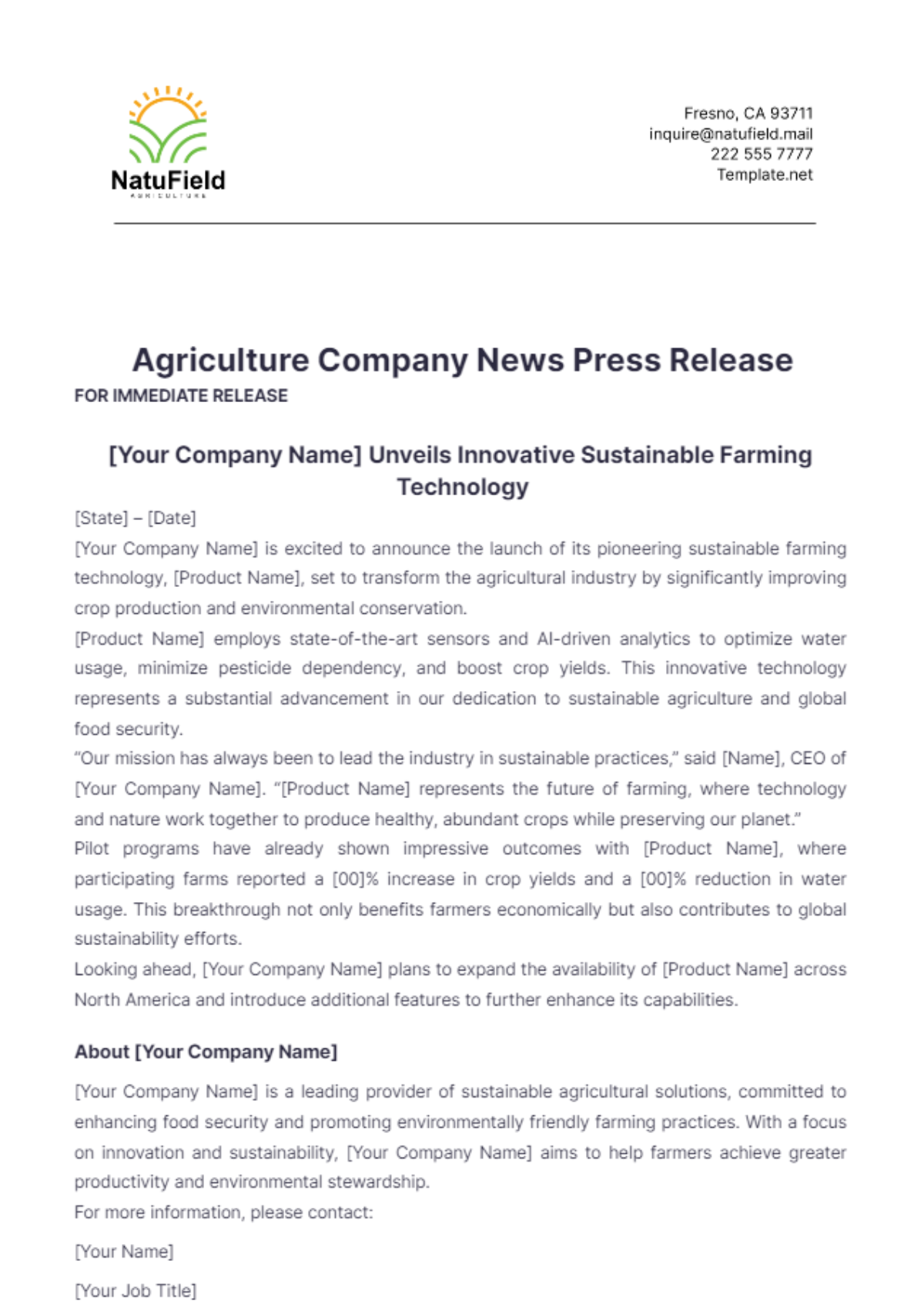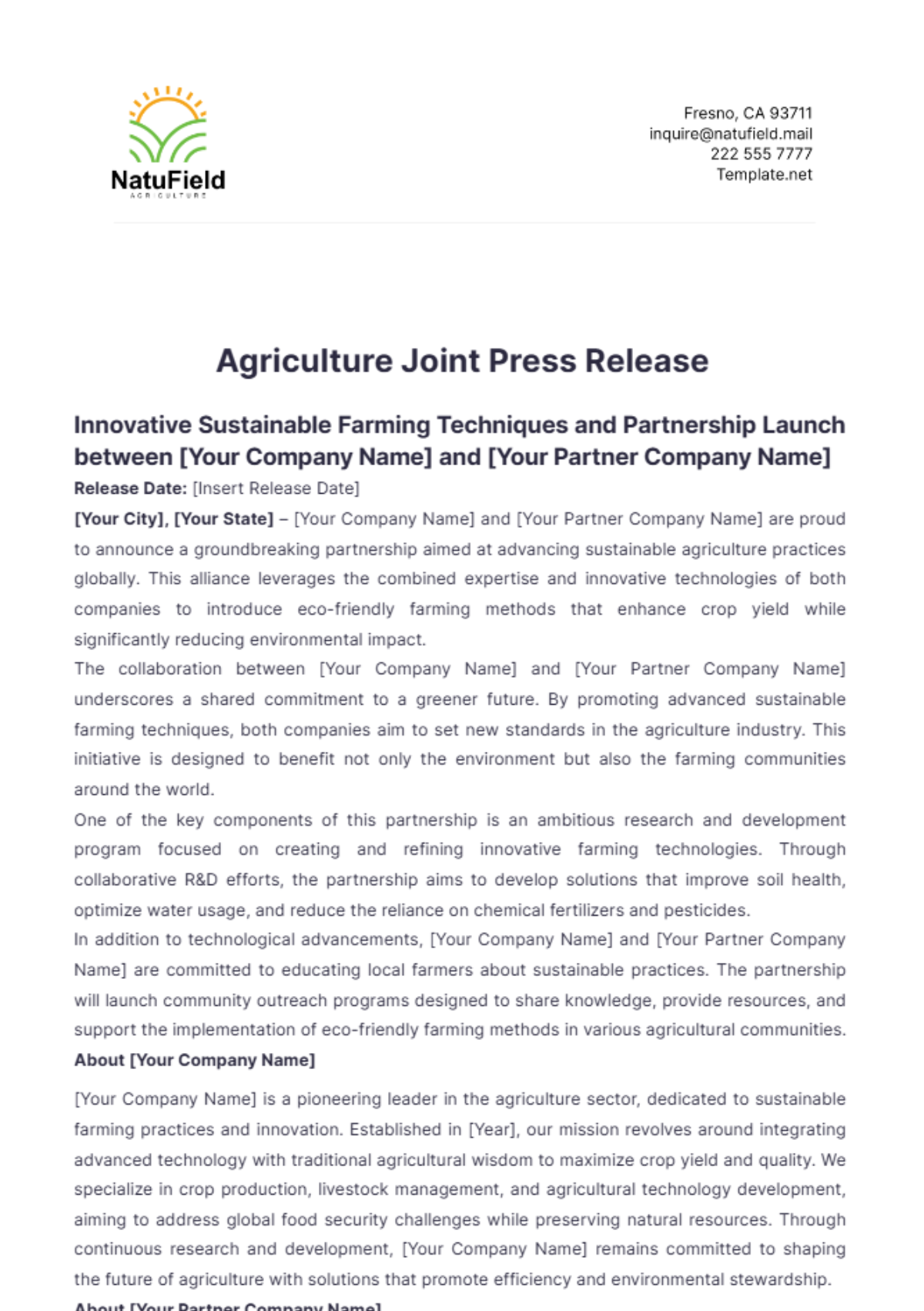Agriculture Financial User Guide
I. Introduction
This Agriculture Financial User Guide of [Your Company Name] is designed to help you navigate the financial aspects of our agricultural operations. From budgeting and cost management to revenue projections and financial analysis, this guide covers all the essential components necessary for effective financial management in agriculture.
Agriculture finance involves a unique set of challenges and opportunities. It requires a thorough understanding of various financial principles and their application to agricultural activities. This guide aims to provide clear instructions and practical tools to help you make informed financial decisions, optimize resources, and achieve sustainable growth.
The primary objective of this guide is to ensure that all financial activities are carried out efficiently and accurately. Whether you are involved in planning, budgeting, cost management, or financial analysis, this guide will provide you with the necessary information and tools to succeed.
II. Budgeting
A. Budget Planning
The following table outlines the key components of the budget planning process:
Component | Description | Example |
|---|---|---|
Revenue Estimation | Projecting future revenues | $500,000 annual sales |
Expense Forecasting | Predicting operational expenses | $300,000 annual costs |
Capital Expenditure | Planning for long-term investments | $100,000 equipment purchase |
Contingency Fund | Setting aside funds for unforeseen expenses | $50,000 emergency fund |
Revenue Estimation: This involves projecting future revenues based on historical data, market trends, and production capacity. Accurate revenue estimation helps in setting realistic financial goals and planning accordingly.
Expense Forecasting: Predicting operational expenses is crucial for maintaining financial stability. This includes costs related to labor, equipment, seeds, fertilizers, and other operational needs.
Capital Expenditure: Planning for long-term investments such as equipment purchases, infrastructure development, and technology upgrades is essential for sustained growth and productivity.
Contingency Fund: Setting aside funds for unforeseen expenses ensures that the business can handle unexpected financial challenges without disrupting operations.
Effective budget planning is essential for the financial health of our agricultural operations. By accurately estimating revenues, forecasting expenses, planning for capital expenditures, and maintaining a contingency fund, [Your Company Name] can ensure financial stability and readiness for future challenges.
B. Budget Allocation
Identify Priorities: Allocate funds based on the strategic priorities of the business. Ensure that critical areas such as crop production, maintenance, and labor receive adequate funding.
Monitor Expenditures: Regularly monitor actual expenditures against the budget to ensure that spending aligns with the plan. This helps in identifying any deviations and taking corrective actions.
Adjust Allocations: Adjust budget allocations as needed based on changing circumstances. Flexibility in budget management ensures that resources are used efficiently and effectively.
Report Performance: Prepare regular budget performance reports to track progress and communicate financial status to stakeholders. Transparency in financial reporting fosters trust and accountability.
Budget allocation is a dynamic process that requires continuous monitoring and adjustment. By prioritizing critical areas, monitoring expenditures, and preparing regular performance reports, [Your Company Name] can ensure effective use of financial resources.
III. Cost Management
A. Cost Categories
The following table categorizes the primary costs associated with agricultural operations:
Cost Category | Description | Example |
|---|---|---|
Direct Costs | Costs directly attributable to production | Seeds, fertilizers, labor |
Indirect Costs | Overhead costs not directly linked to production | Utilities, administrative costs |
Fixed Costs | Costs that remain constant regardless of output | Rent, insurance |
Variable Costs | Costs that vary with production levels | Raw materials, transportation |
Direct Costs: These are costs that can be directly linked to the production process, such as seeds, fertilizers, and labor. Managing direct costs efficiently is crucial for maintaining profitability.
Indirect Costs: Overhead costs such as utilities and administrative expenses are not directly tied to production but are necessary for overall operations. Controlling indirect costs helps in reducing overall expenditure.
Fixed Costs: These costs remain constant regardless of the level of production. Examples include rent and insurance. Understanding fixed costs is essential for long-term financial planning.
Variable Costs: Variable costs change with the level of production. Raw materials and transportation are typical examples. Efficient management of variable costs can lead to significant savings.
Effective cost management involves understanding and controlling various cost categories. By categorizing costs into direct, indirect, fixed, and variable, [Your Company Name] can implement targeted strategies to optimize expenditures and enhance profitability.
B. Cost Control Strategies
Implement Cost-saving Measures: Identify areas where costs can be reduced without compromising quality. This includes optimizing resource use, negotiating better terms with suppliers, and reducing waste.
Regular Cost Analysis: Conduct regular cost analysis to identify trends and variances. Understanding cost patterns helps in making informed decisions and implementing corrective actions.
Use Technology: Leverage technology to automate processes and improve efficiency. Technology solutions can help in reducing labor costs and increasing productivity.
Benchmarking: Compare costs against industry standards and best practices. Benchmarking helps in identifying areas for improvement and adopting proven cost management strategies.
Implementing cost control strategies is vital for maintaining financial health. By identifying cost-saving measures, conducting regular analysis, leveraging technology, and benchmarking against industry standards, [Your Company Name] can effectively manage costs.
IV. Revenue Management
A. Revenue Streams
The following table lists the primary revenue streams for our agricultural operations:
Revenue Stream | Description | Example |
|---|---|---|
Crop Sales | Revenue from selling harvested crops | $400,000 from wheat sales |
Livestock Sales | Revenue from selling livestock | $100,000 from cattle sales |
Value-added Products | Revenue from processed products | $50,000 from organic juices |
Agritourism | Revenue from tourism activities | $30,000 from farm tours |
Crop Sales: The primary source of revenue is from selling harvested crops such as wheat, corn, and vegetables. This stream forms the backbone of our financial inflow.
Livestock Sales: Revenue from selling livestock, including cattle and poultry, provides a significant contribution to our overall income. Diversifying into livestock sales helps mitigate risks associated with crop production.
Value-added Products: Processed agricultural products such as organic juices and packaged foods offer higher profit margins compared to raw produce. Developing value-added products can enhance revenue and profitability.
Agritourism: Engaging in agritourism activities, such as farm tours and educational workshops, provides an additional revenue stream. Agritourism also helps in promoting the farm and building community relations.
Identifying and managing diverse revenue streams is essential for financial stability. By focusing on crop sales, livestock sales, value-added products, and agritourism, [Your Company Name] can enhance its revenue potential and achieve sustainable growth.
B. Revenue Optimization
Market Research: Conduct thorough market research to identify high-demand products and emerging trends. Understanding market dynamics helps in optimizing production and sales strategies.
Pricing Strategy: Develop a competitive pricing strategy that maximizes revenue while remaining attractive to customers. Consider factors such as production costs, market demand, and competitor pricing.
Sales Channels: Diversify sales channels to reach a broader customer base. This includes direct sales, online platforms, and partnerships with retailers and distributors.
Customer Retention: Implement strategies to retain existing customers and encourage repeat purchases. Building strong customer relationships enhances loyalty and long-term revenue.
Promotional Activities: Engage in promotional activities such as discounts, seasonal offers, and marketing campaigns. Effective promotion increases visibility and drives sales.
Optimizing revenue involves understanding market trends, developing competitive pricing strategies, diversifying sales channels, retaining customers, and engaging in promotional activities. By implementing these strategies, [Your Company Name] can maximize its revenue potential.
V. Financial Analysis
A. Financial Ratios
The following table presents key financial ratios used for analyzing agricultural financial performance:
Financial Ratio | Formula | Interpretation |
|---|---|---|
Gross Profit Margin | (Revenue - Cost of Goods Sold) / Revenue | Measures profitability of core operations |
Current Ratio | Current Assets / Current Liabilities | Assesses liquidity and short-term solvency |
Debt-to-Equity Ratio | Total Debt / Total Equity | Evaluates financial leverage and risk |
Return on Investment | (Net Profit / Total Investment) X 100 | Indicates profitability of investment |
Gross Profit Margin: This ratio measures the profitability of core operations by comparing gross profit to revenue. A higher gross profit margin indicates efficient cost management and strong profitability.
Current Ratio: The current ratio assesses liquidity by comparing current assets to current liabilities. A ratio above 1 indicates that the company can meet its short-term obligations.
Debt-to-Equity Ratio: This ratio evaluates financial leverage by comparing total debt to total equity. A lower ratio suggests lower financial risk, while a higher ratio indicates higher leverage.
Return on Investment: ROI measures the profitability of an investment by comparing net profit to total investment. A higher ROI indicates a more profitable investment.
Financial ratios provide valuable insights into the financial health and performance of the business. By analyzing these ratios, [Your Company Name] can make informed decisions and implement strategies to enhance financial stability.
B. Financial Statements
The following table summarizes the key components of financial statements used in agriculture finance:
Financial Statement | Description | Key Components |
|---|---|---|
Income Statement | Shows revenue, expenses, and profit/loss | Revenue, COGS, Operating Expenses |
Balance Sheet | Summarizes assets, liabilities, and equity | Assets, Liabilities, Equity |
Cash Flow Statement | Tracks cash inflows and outflows | Operating, Investing, Financing Cash Flows |
Statement of Changes | Details changes in equity | Net Income, Dividends, Equity Changes |
Income Statement: The income statement shows the company's revenue, expenses, and profit or loss over a specific period. It provides insights into operational performance and profitability.
Balance Sheet: The balance sheet summarizes the company's assets, liabilities, and equity at a specific point in time. It provides a snapshot of the financial position and overall health.
Cash Flow Statement: This statement tracks cash inflows and outflows from operating, investing, and financing activities. It provides insights into the company's liquidity and cash management.
Statement of Changes: The statement of changes details changes in equity, including net income, dividends, and other equity changes. It helps in understanding how equity has evolved over time.
Analyzing financial statements is crucial for understanding the financial performance and position of the business. By regularly reviewing income statements, balance sheets, cash flow statements, and statements of changes, [Your Company Name] can make informed financial decisions and ensure long-term stability.
VI. Capital Management
A. Capital Allocation
The following table outlines the process of capital allocation in agricultural operations:
Allocation Area | Description | Example |
|---|---|---|
Operating Capital | Funds for day-to-day operations | $200,000 for seeds and fertilizers |
Expansion Capital | Funds for business expansion and growth | $150,000 for new land acquisition |
Emergency Fund | Reserve funds for unforeseen circumstances | $50,000 for natural disasters |
Innovation Fund | Funds for research and development | $100,000 for precision farming tech |
Operating Capital: This allocation is for day-to-day operational expenses such as seeds, fertilizers, and labor. Adequate operating capital ensures smooth and continuous operations.
Expansion Capital: Funds allocated for business expansion, such as acquiring new land or building infrastructure, support long-term growth and increase production capacity.
Emergency Fund: Setting aside an emergency fund for unforeseen circumstances like natural disasters or market fluctuations helps in managing risks and maintaining financial stability.
Innovation Fund: Allocating funds for research and development, particularly in areas like precision farming technology, drives innovation and enhances competitive advantage.
Capital allocation is essential for ensuring that funds are used effectively to support operations, expansion, risk management, and innovation. By strategically allocating capital, [Your Company Name] can achieve sustainable growth and resilience.
B. Funding Sources
Internal Funding: Utilize retained earnings and internal reserves for funding projects. Internal funding is cost-effective and does not incur interest expenses.
Bank Loans: Secure bank loans for large capital expenditures. Ensure favorable terms and manageable repayment schedules to maintain financial health.
Government Grants: Apply for government grants and subsidies available for agricultural projects. Grants provide non-repayable funding, reducing financial burden.
Investor Funding: Attract investors to provide capital in exchange for equity. Investor funding can support large-scale projects and expansion efforts.
Crowdfunding: Explore crowdfunding platforms to raise small amounts of capital from a large number of people. Crowdfunding can support specific projects and community initiatives.
Understanding and leveraging various funding sources ensures that [Your Company Name] has access to the necessary capital for growth and innovation. By combining internal funding, loans, grants, investor funding, and crowdfunding, the company can achieve financial flexibility and sustainability.
VII. Risk Management
A. Financial Risks
The following table outlines the primary financial risks and their mitigation strategies:
Financial Risk | Description | Mitigation Strategy |
|---|---|---|
Market Risk | Risk of price fluctuations and demand changes | Diversify products, secure contracts |
Credit Risk | Risk of non-payment by customers | Conduct credit checks, set credit limits |
Liquidity Risk | Risk of insufficient cash flow | Maintain cash reserves, manage receivables |
Interest Rate Risk | Risk of interest rate fluctuations | Lock in fixed interest rates, hedge loans |
Market Risk: Market risk arises from price fluctuations and changes in demand. Diversifying products and securing long-term contracts can help mitigate this risk and ensure stable revenue.
Credit Risk: Credit risk involves the possibility of non-payment by customers. Conducting thorough credit checks and setting credit limits can reduce the likelihood of bad debts.
Liquidity Risk: Liquidity risk is the risk of having insufficient cash flow to meet obligations. Maintaining adequate cash reserves and efficiently managing receivables can mitigate liquidity risk.
Interest Rate Risk: Interest rate risk arises from fluctuations in interest rates that affect loan costs. Locking in fixed interest rates and hedging loans can protect against interest rate volatility.
Effective risk management involves identifying, assessing, and mitigating financial risks. By understanding market, credit, liquidity, and interest rate risks, [Your Company Name] can implement strategies to minimize their impact.
B. Operational Risks
Supply Chain Disruptions: Risk of interruptions in the supply chain affecting production. Develop alternative suppliers and maintain inventory buffers to mitigate this risk.
Labor Shortages: Risk of insufficient labor affecting operations. Implement training programs and improve working conditions to attract and retain workers.
Equipment Failures: Risk of equipment breakdowns disrupting production. Conduct regular maintenance and invest in reliable equipment to minimize failures.
Regulatory Compliance: Risk of non-compliance with regulations affecting operations. Stay updated on regulatory changes and ensure compliance to avoid penalties.
Environmental Risks: Risk of environmental factors such as weather conditions affecting production. Implement climate-resilient practices and technologies to mitigate environmental risks.
Managing operational risks is crucial for maintaining smooth and efficient operations. By addressing supply chain disruptions, labor shortages, equipment failures, regulatory compliance, and environmental risks, [Your Company Name] can ensure operational stability and resilience.
VIII. Financial Reporting
A. Reporting Standards
The following table outlines the key financial reporting standards applicable to agricultural operations:
Reporting Standard | Description | Key Requirements |
|---|---|---|
IFRS | International Financial Reporting Standards | Accurate financial statements, fair value reporting |
GAAP | Generally Accepted Accounting Principles | Consistency, reliability, transparency |
IAS | International Accounting Standards | Detailed disclosure, comprehensive reporting |
FASB | Financial Accounting Standards Board guidelines | Industry-specific guidelines, accuracy |
IFRS: International Financial Reporting Standards ensure that financial statements are accurate and reflect fair value. Compliance with IFRS promotes transparency and comparability in financial reporting.
GAAP: Generally Accepted Accounting Principles emphasize consistency, reliability, and transparency in financial reporting. Adhering to GAAP ensures that financial statements are trustworthy and standardized.
IAS: International Accounting Standards require detailed disclosure and comprehensive reporting. Following IAS guidelines ensures that financial information is complete and understandable.
FASB: Financial Accounting Standards Board guidelines provide industry-specific standards for accurate financial reporting. Compliance with FASB guidelines ensures that financial statements meet the specific needs of the agricultural industry.
Understanding and adhering to financial reporting standards is essential for accurate and transparent financial reporting. By following IFRS, GAAP, IAS, and FASB guidelines, [Your Company Name] can ensure the integrity and reliability of its financial statements.
B. Financial Reporting Process
Data Collection: Gather all relevant financial data from various sources, including sales records, expense reports, and bank statements. Ensure accuracy and completeness of the data.
Data Analysis: Analyze the collected data to identify trends, variances, and key performance indicators. Use financial ratios and other metrics to gain insights into financial performance.
Report Preparation: Prepare financial reports, including income statements, balance sheets, and cash flow statements. Ensure that reports comply with applicable reporting standards.
Review and Approval: Review the prepared reports for accuracy and completeness. Obtain approval from senior management or the finance committee before finalizing the reports.
Distribution: Distribute the approved financial reports to relevant stakeholders, including investors, management, and regulatory authorities. Ensure timely and accurate dissemination of financial information.
The financial reporting process involves data collection, analysis, report preparation, review, approval, and distribution. By following a structured process, [Your Company Name] can ensure accurate and timely financial reporting.
IX. Review and Update
A. Review
The management uses this process for review:
Annual Review: Conduct an annual review of the financial user guide to ensure its relevance and accuracy. Update the guide based on changes in financial practices, regulations, and business operations.
Stakeholder Feedback: Gather feedback from stakeholders, including finance team members, management, and external auditors. Use the feedback to identify areas for improvement and update the guide accordingly.
Benchmarking: Compare the guide against industry best practices and standards. Ensure that the guide aligns with current industry trends and regulatory requirements.
Performance Metrics: Review performance metrics and financial outcomes to assess the effectiveness of the guide. Use the findings to make necessary adjustments and improvements.
Compliance Check: Ensure that the guide complies with all relevant financial reporting standards and regulations. Update the guide to reflect any changes in compliance requirements.
B. Update
The document will be updated by the management following this process:
Document Changes: Document all changes made to the financial user guide, including updates to processes, formulas, and reporting standards. Maintain a clear record of revisions for future reference.
Communicate Updates: Communicate any updates to the guide to all relevant stakeholders. Ensure that team members are aware of the changes and understand how to implement them.
Training Sessions: Conduct training sessions to familiarize team members with the updated guide. Provide practical examples and scenarios to help them apply the new processes and procedures.
Reviewing and updating the financial user guide ensures that it remains relevant, accurate, and effective. By conducting regular reviews, gathering feedback, benchmarking against industry standards, and maintaining compliance, [Your Company Name] can ensure that the guide continues to support effective financial management.
